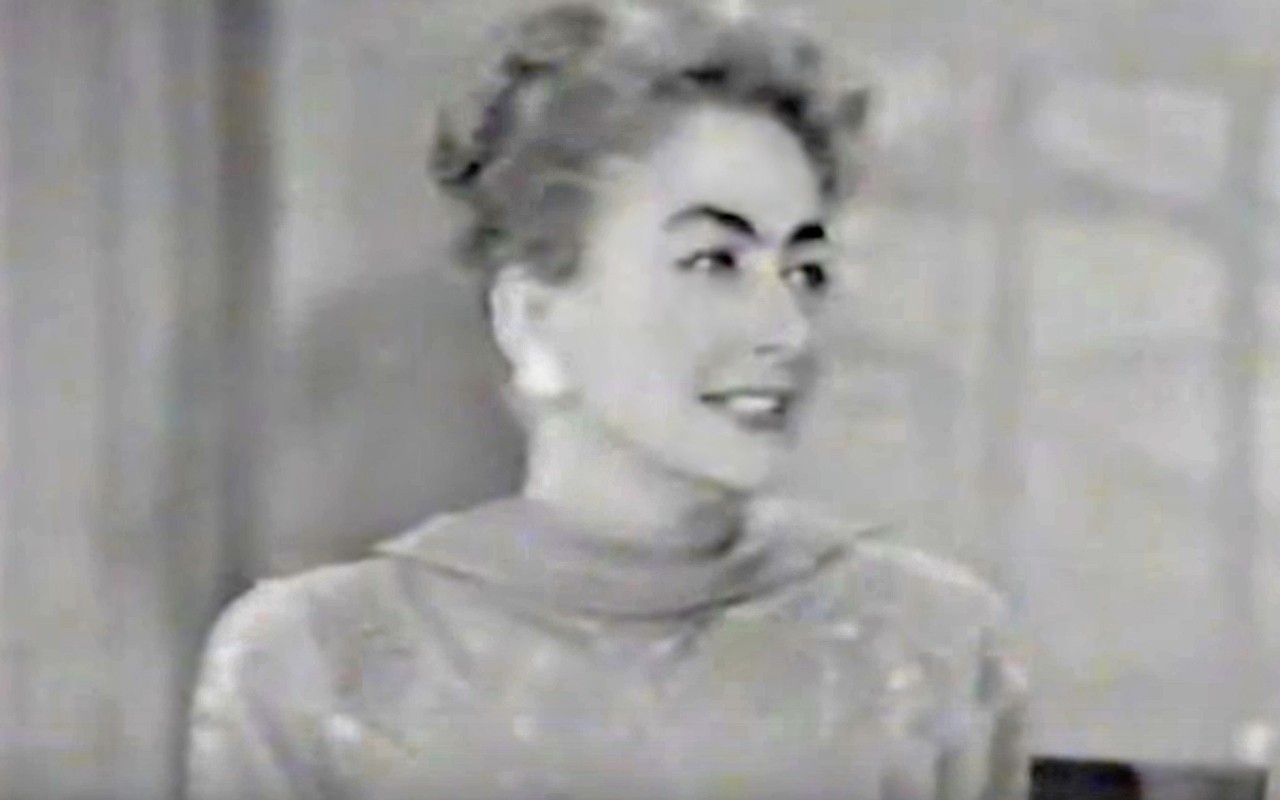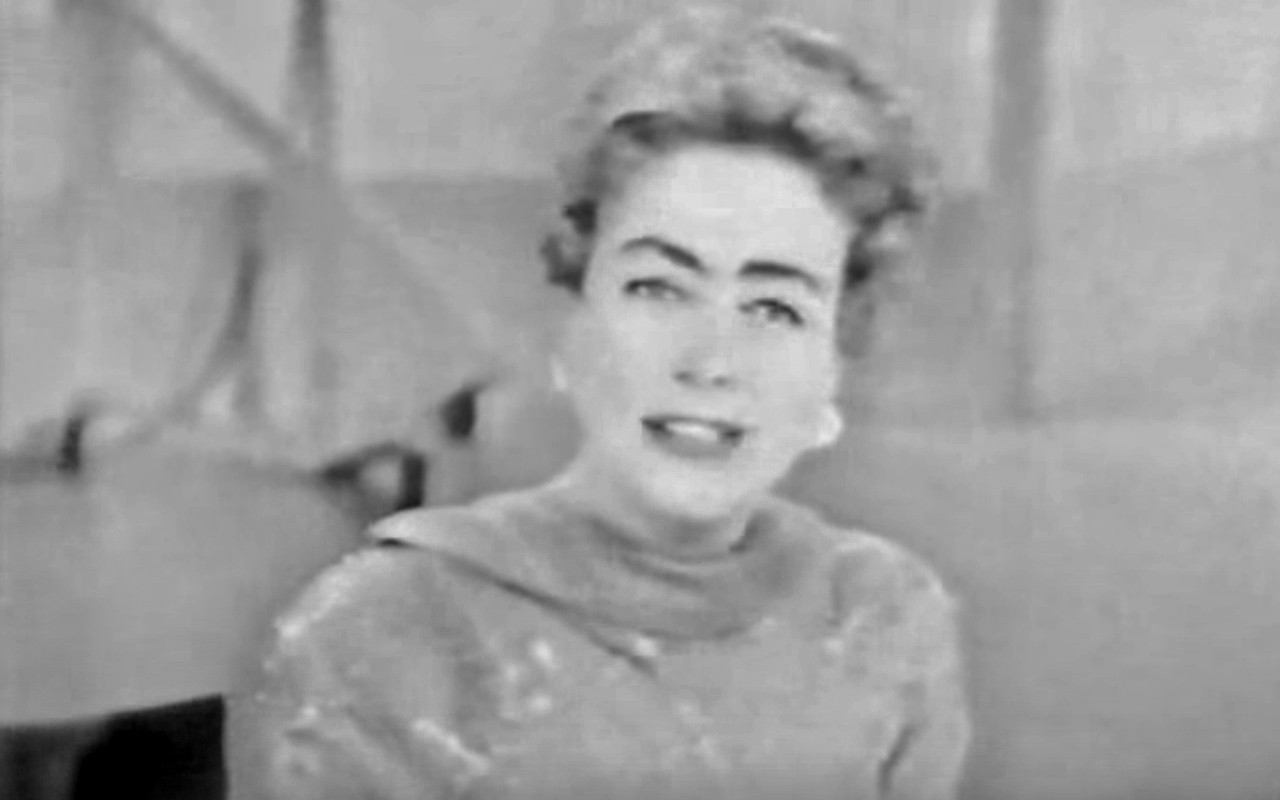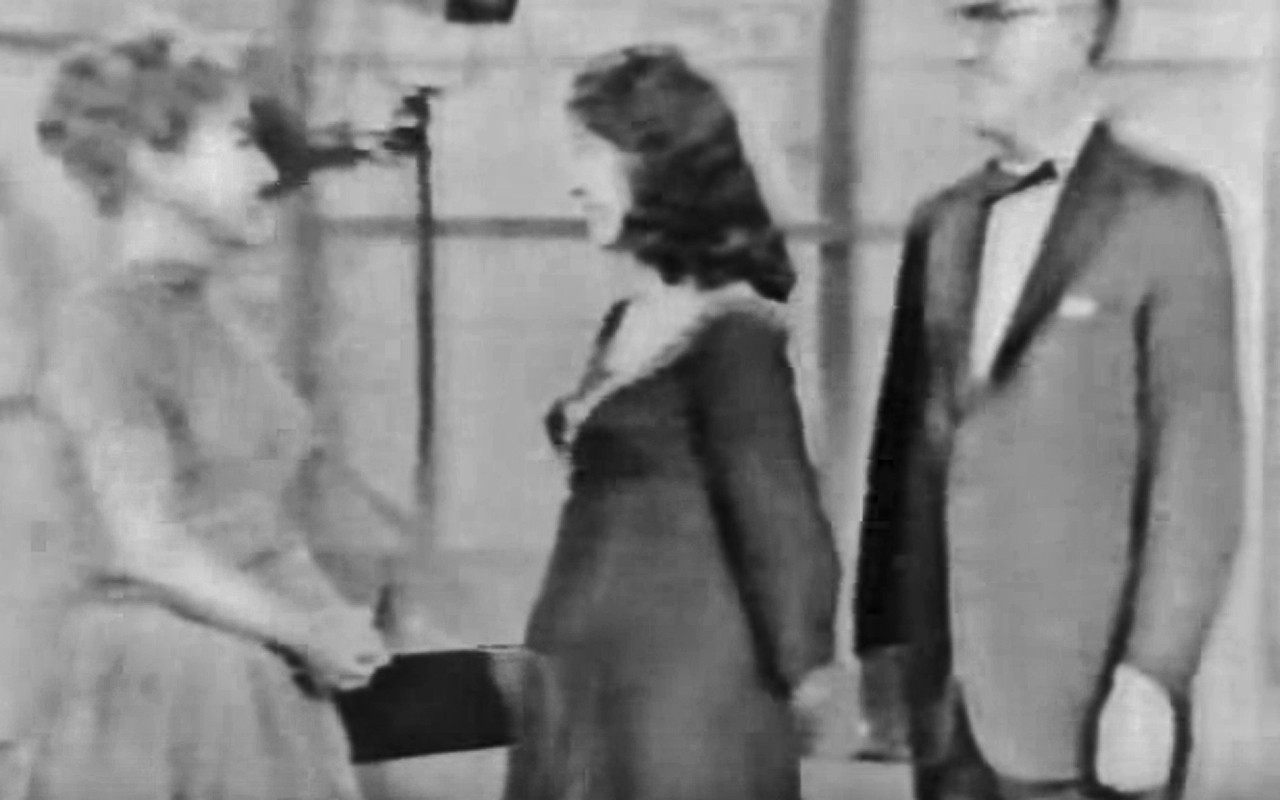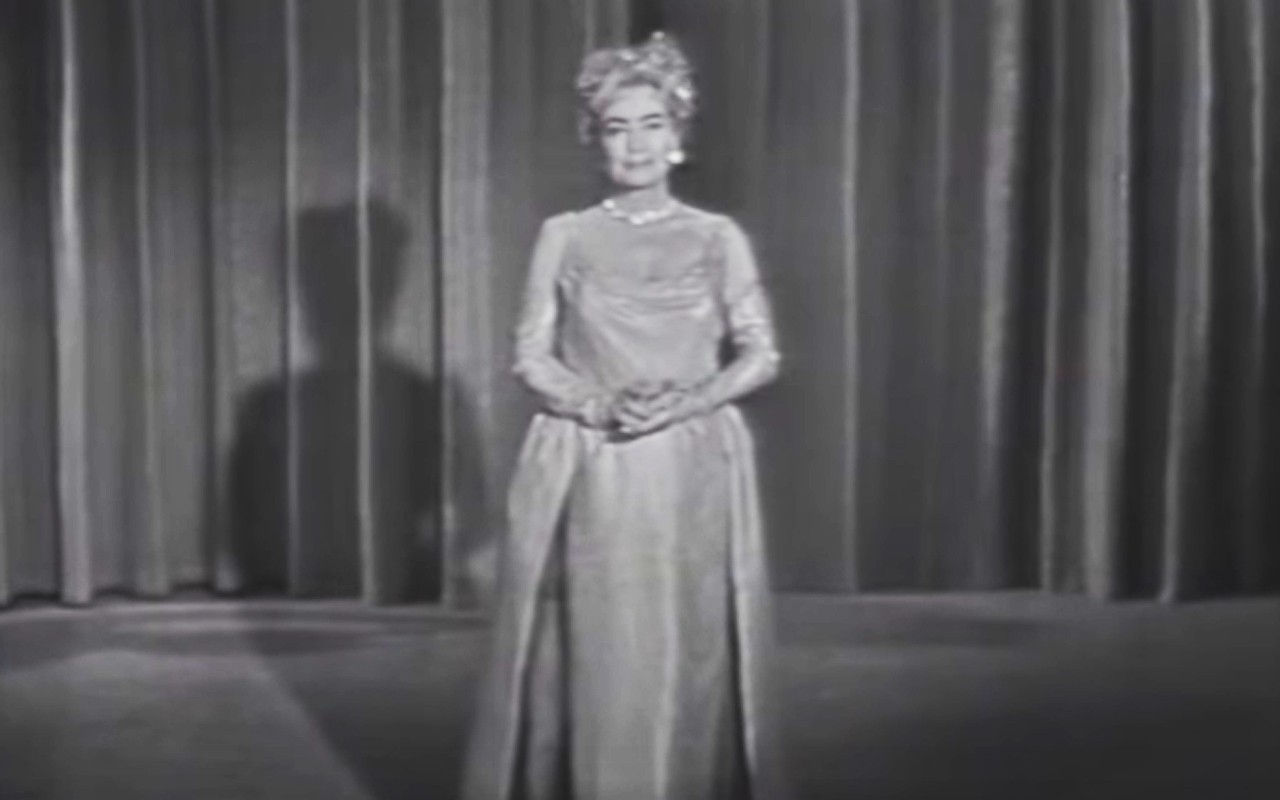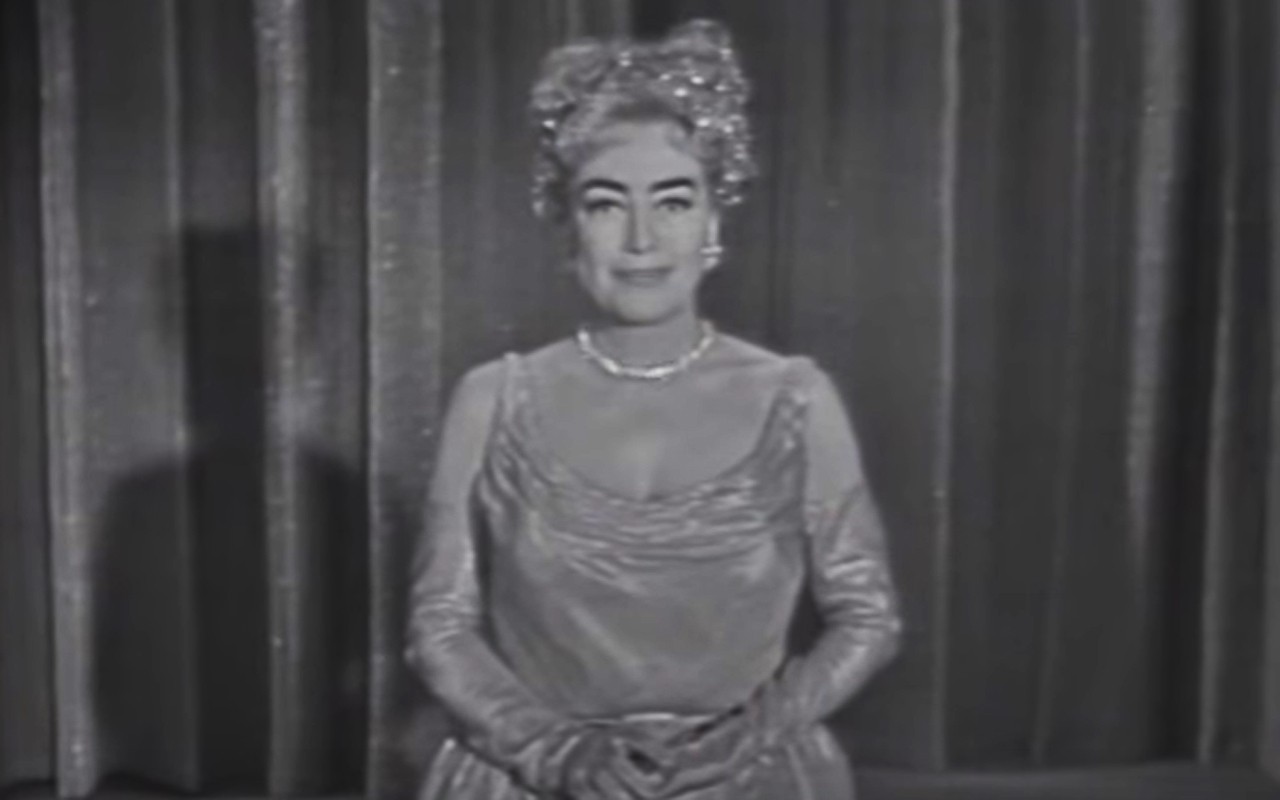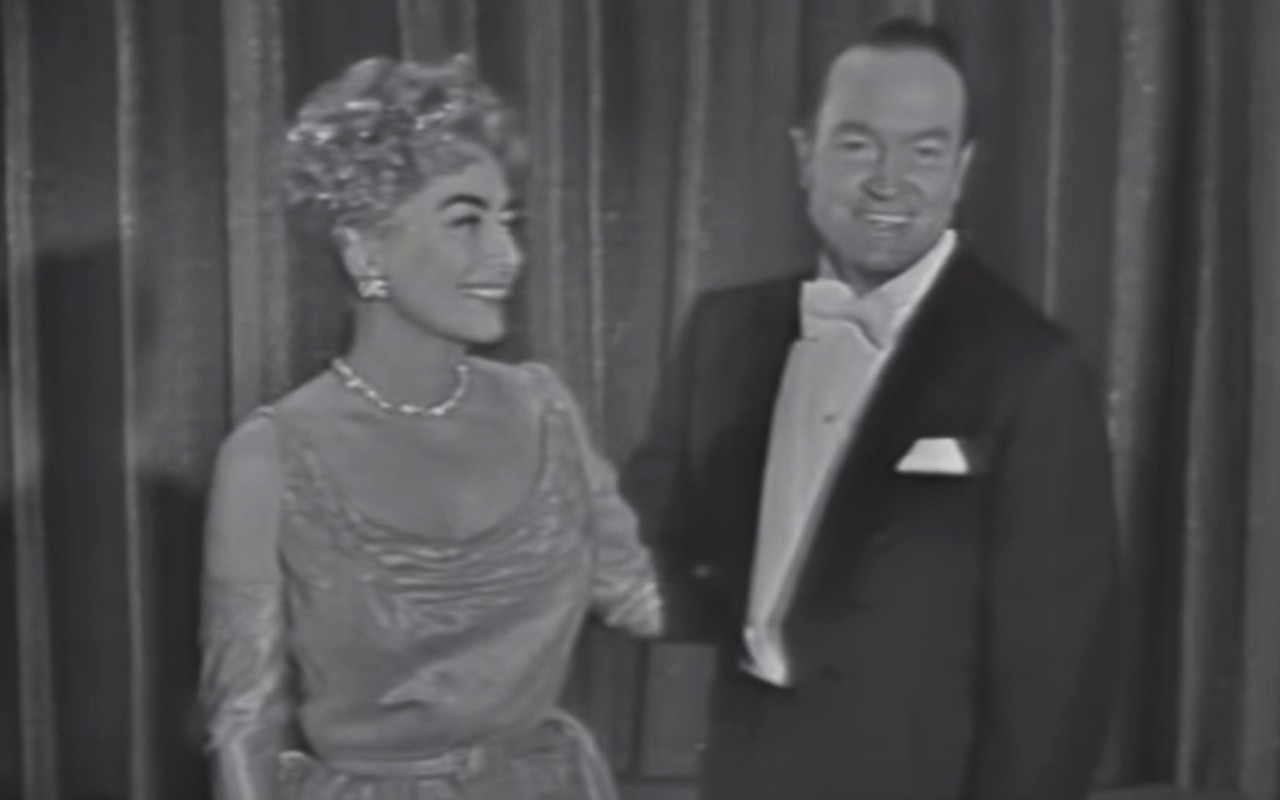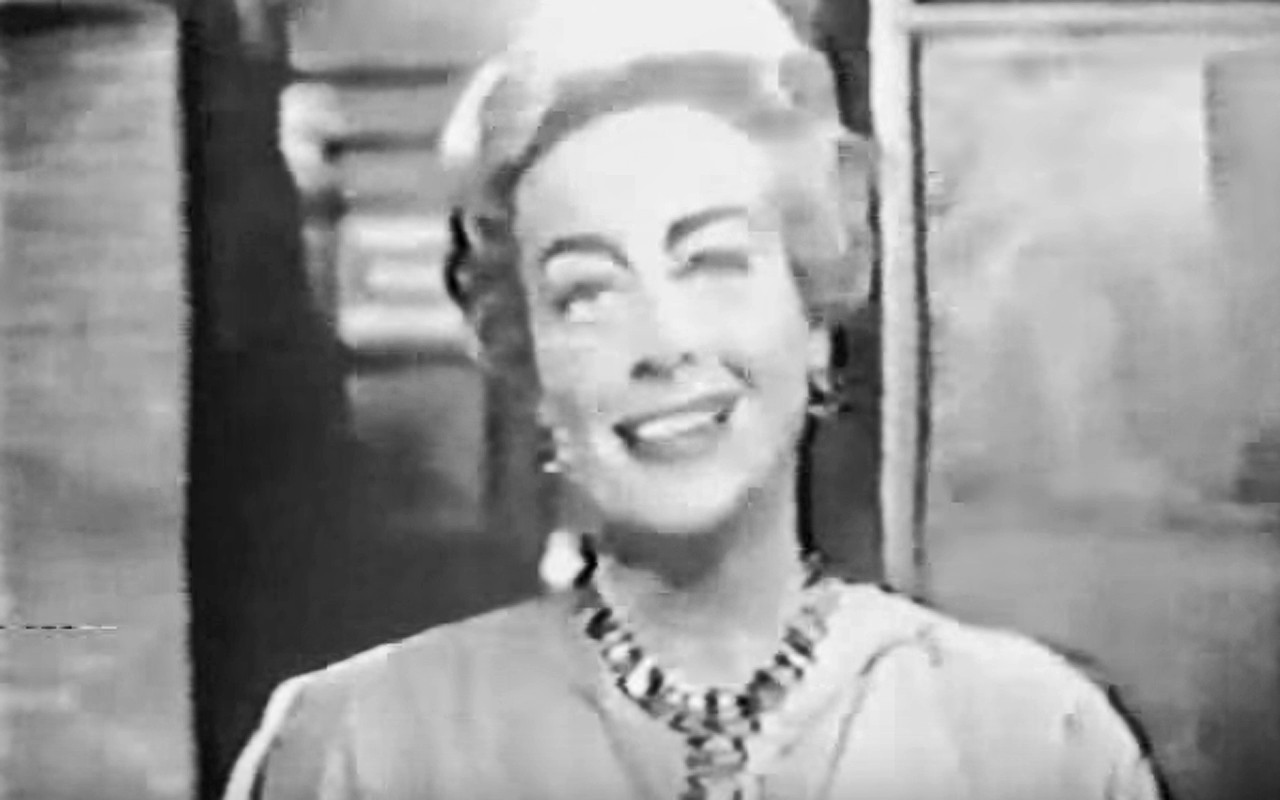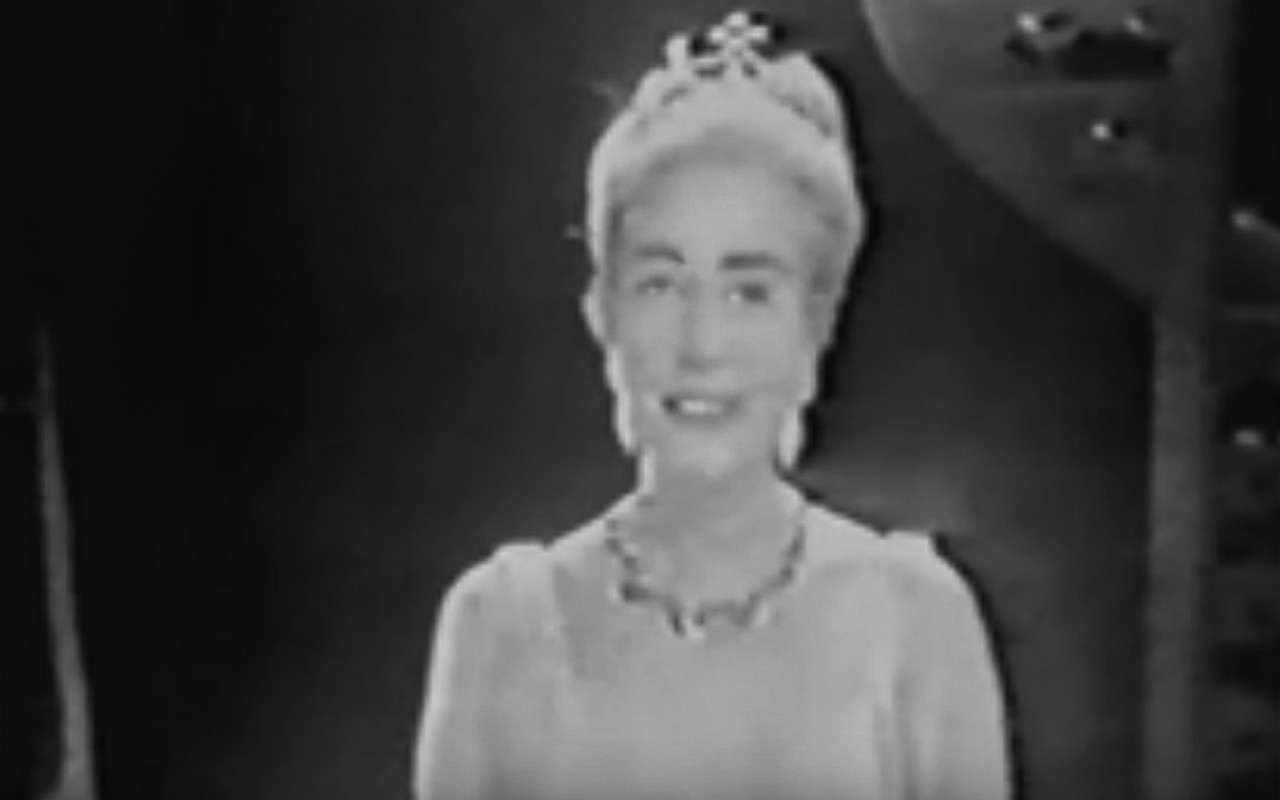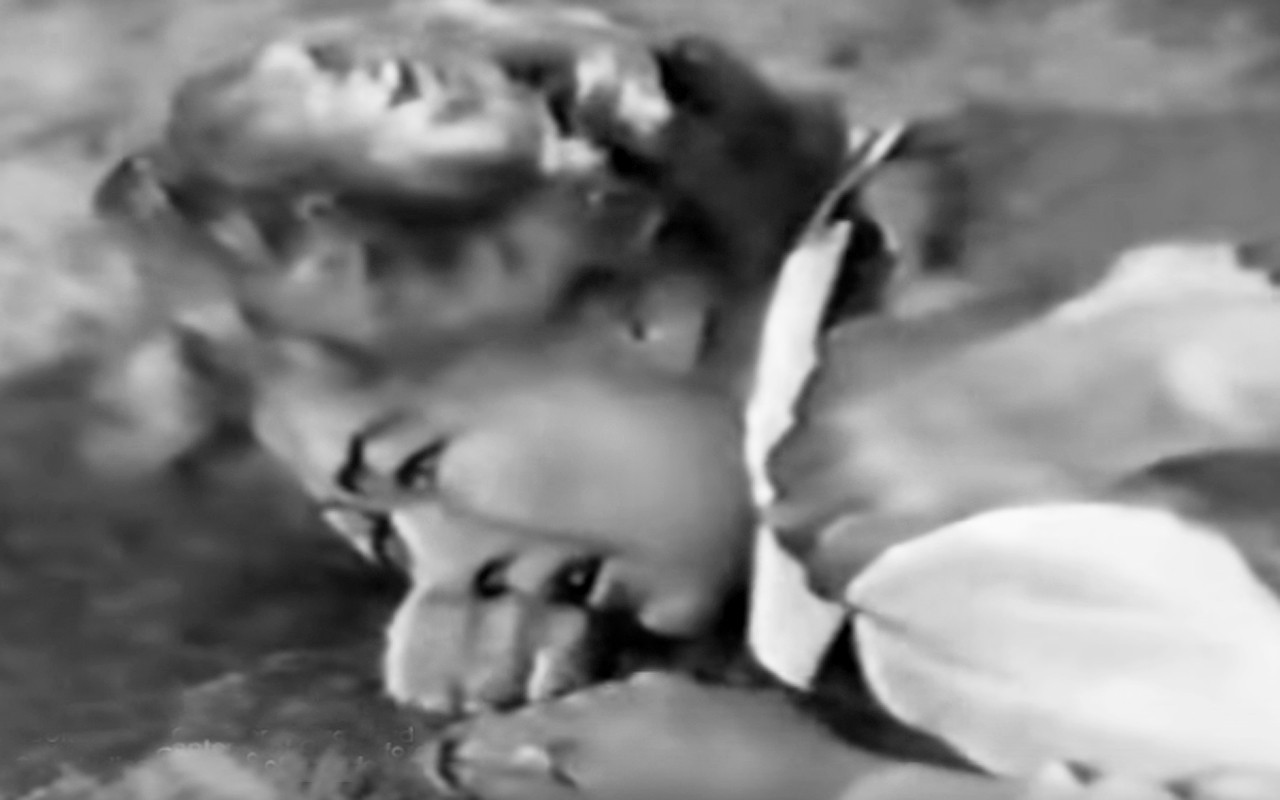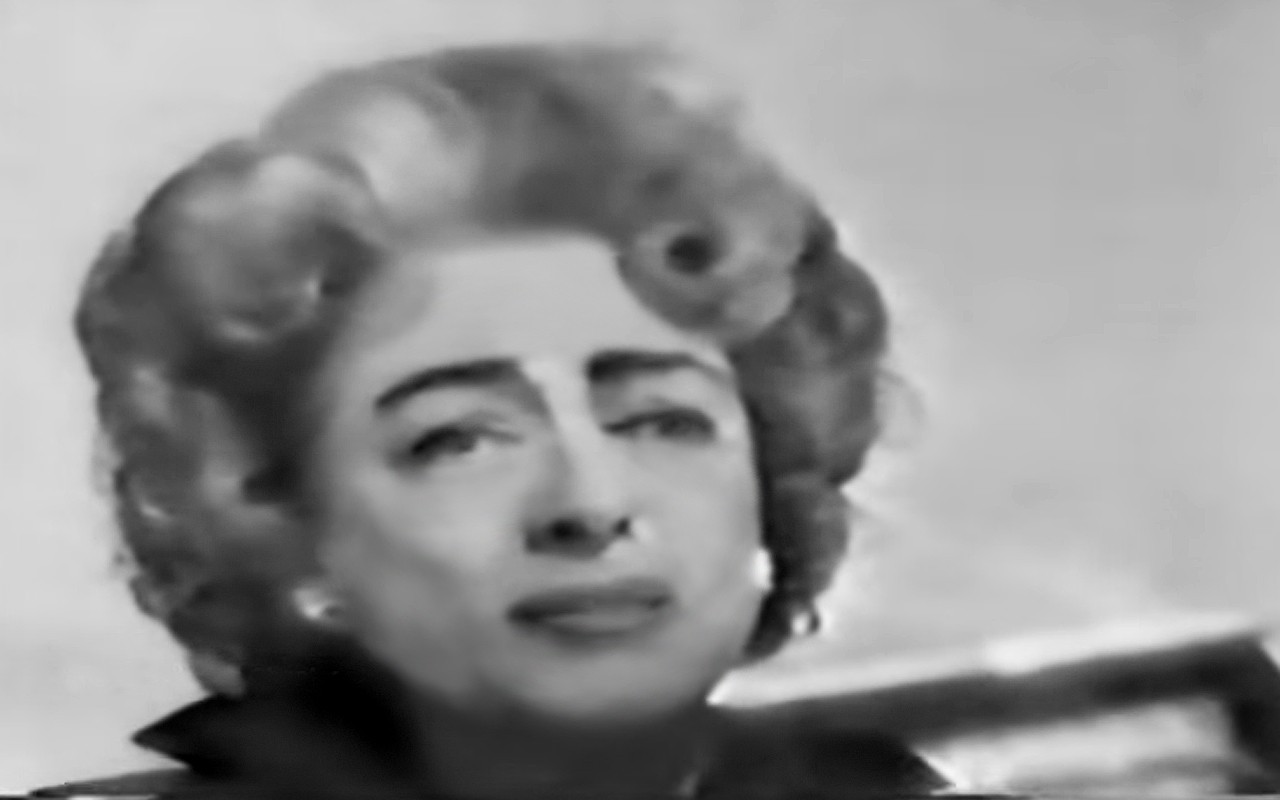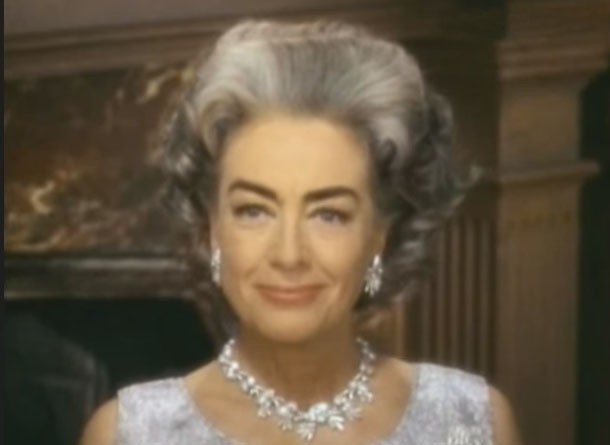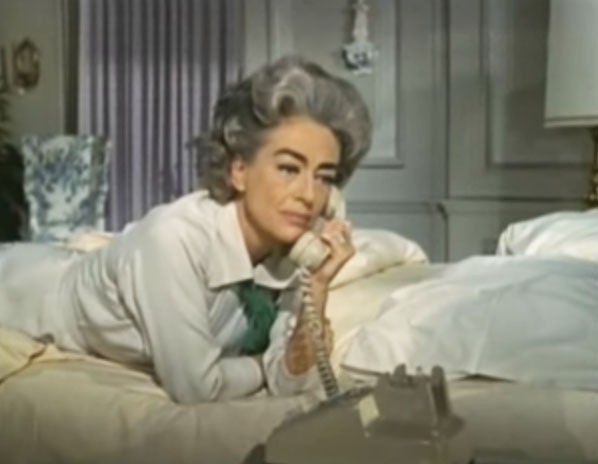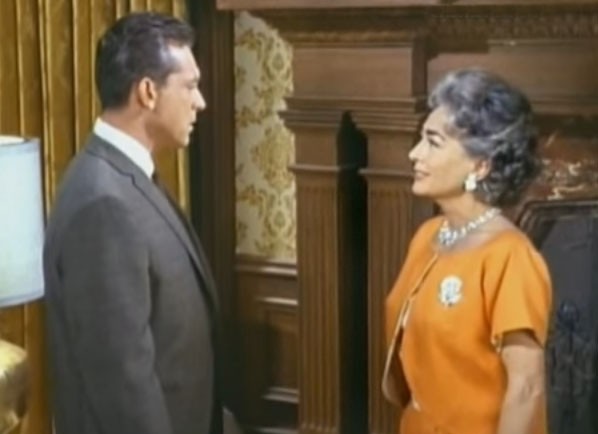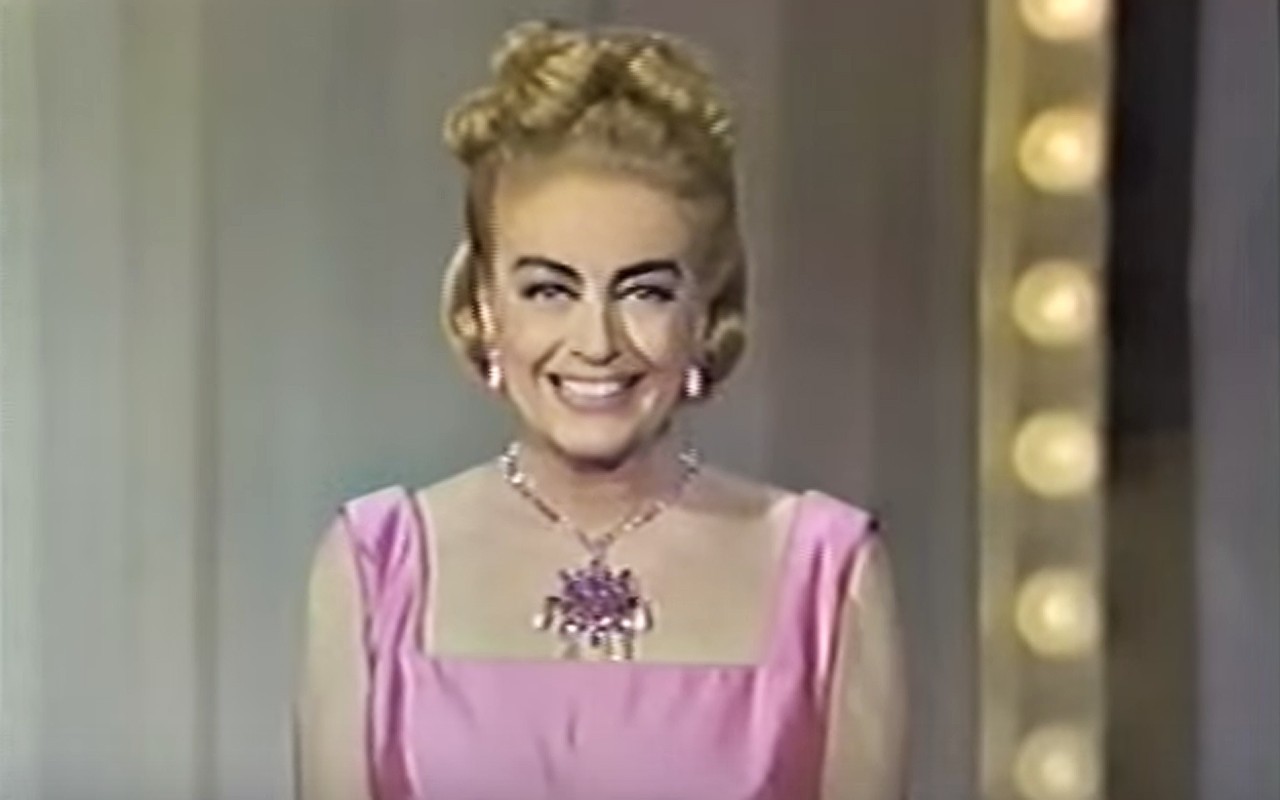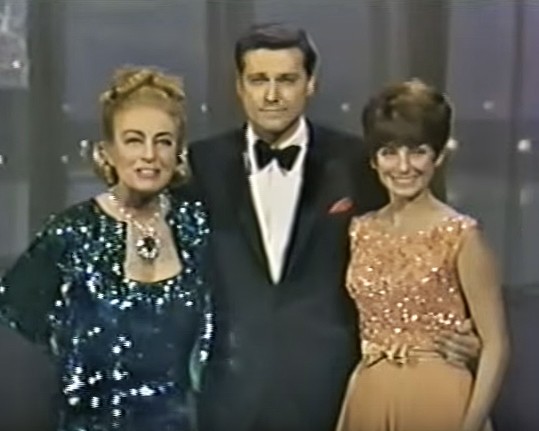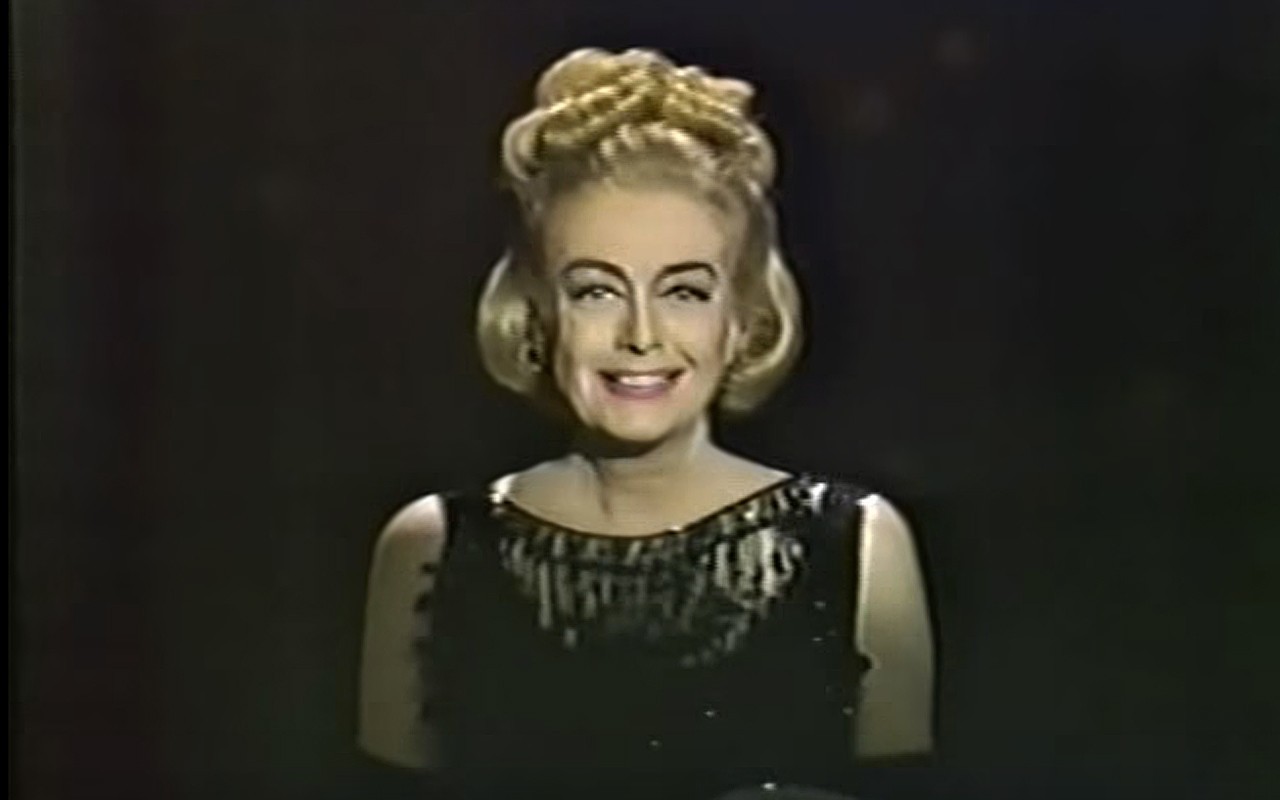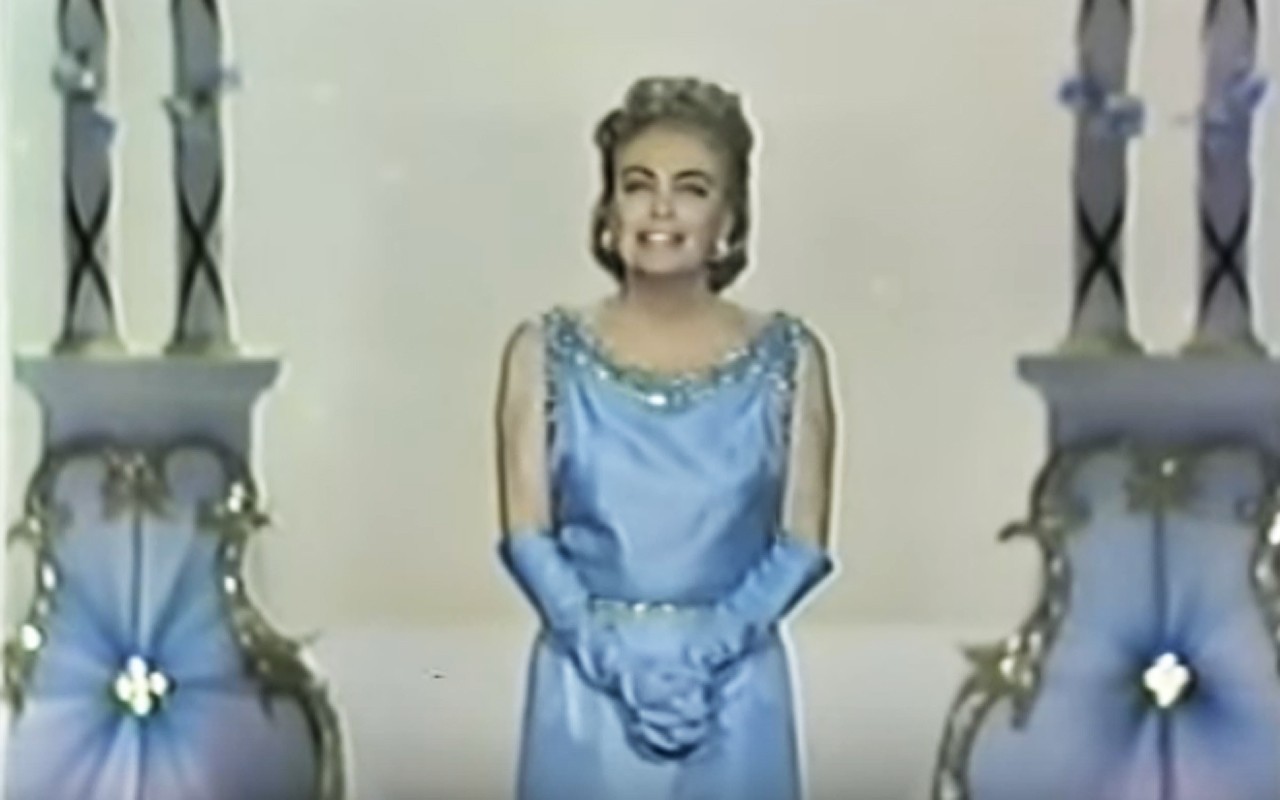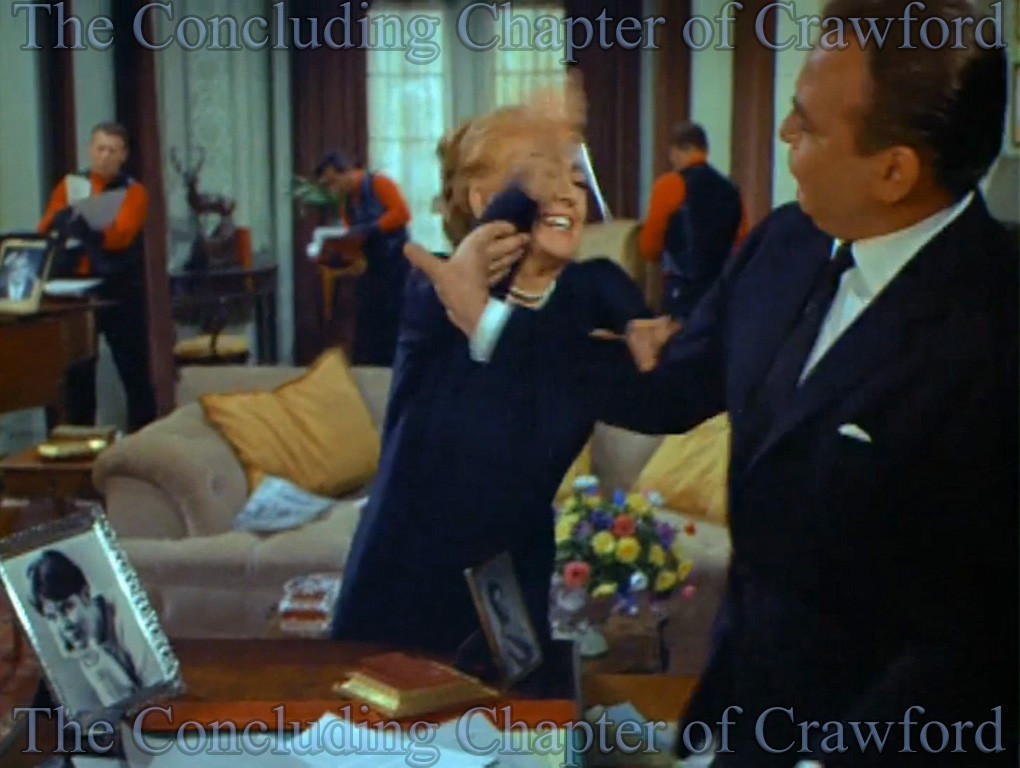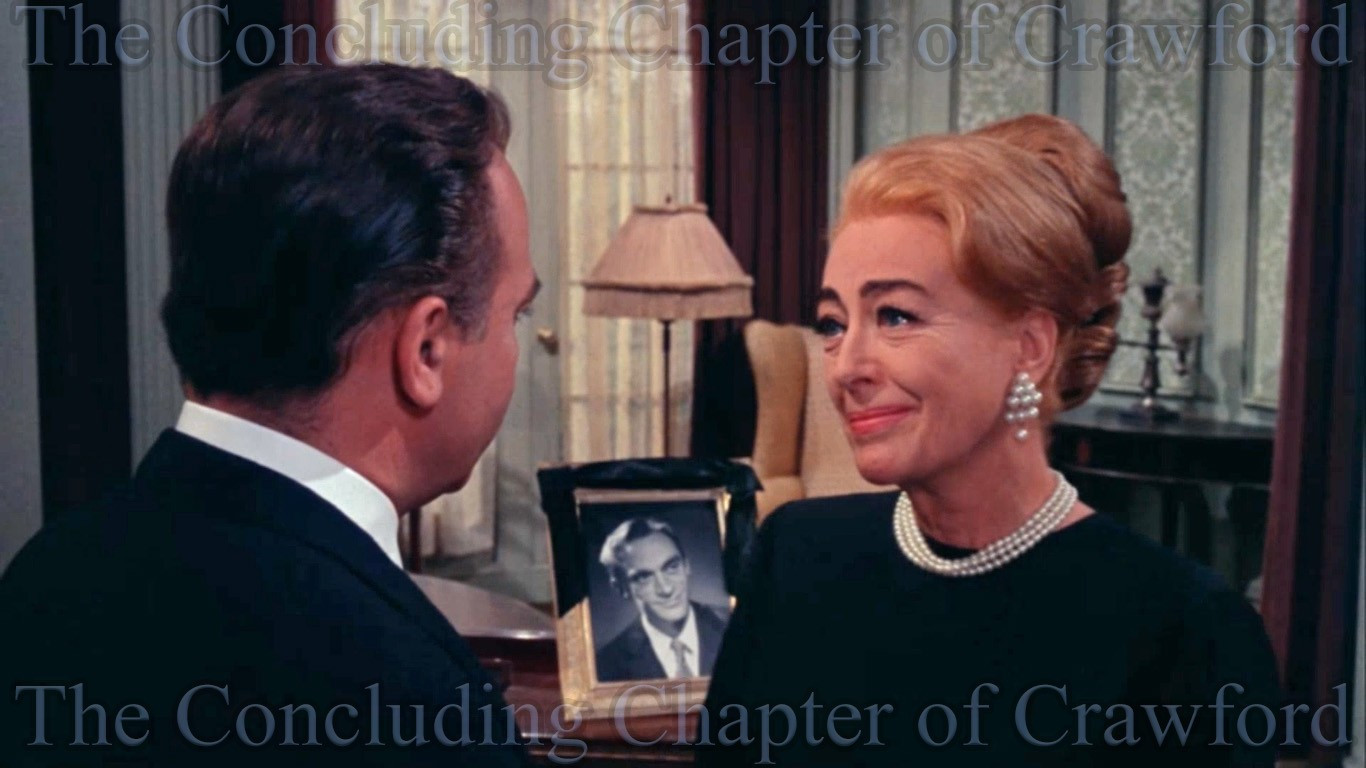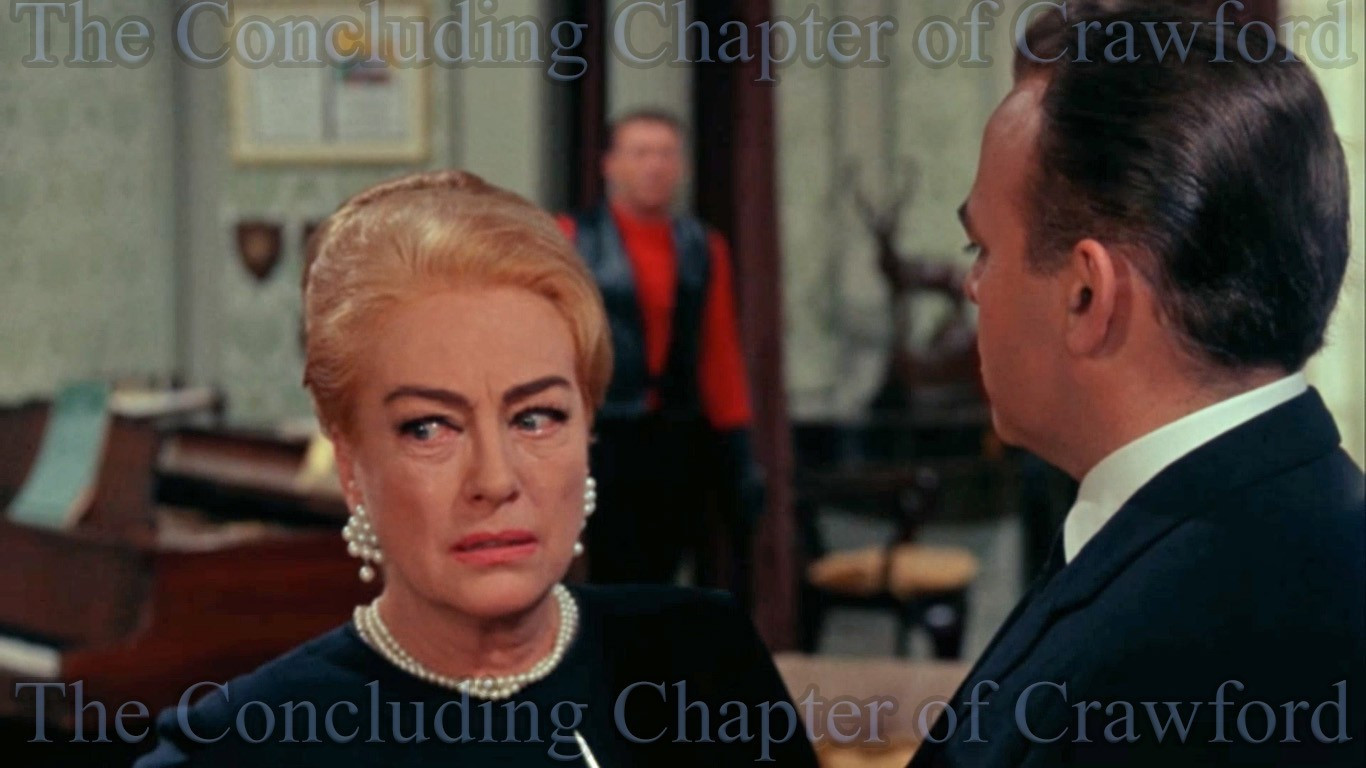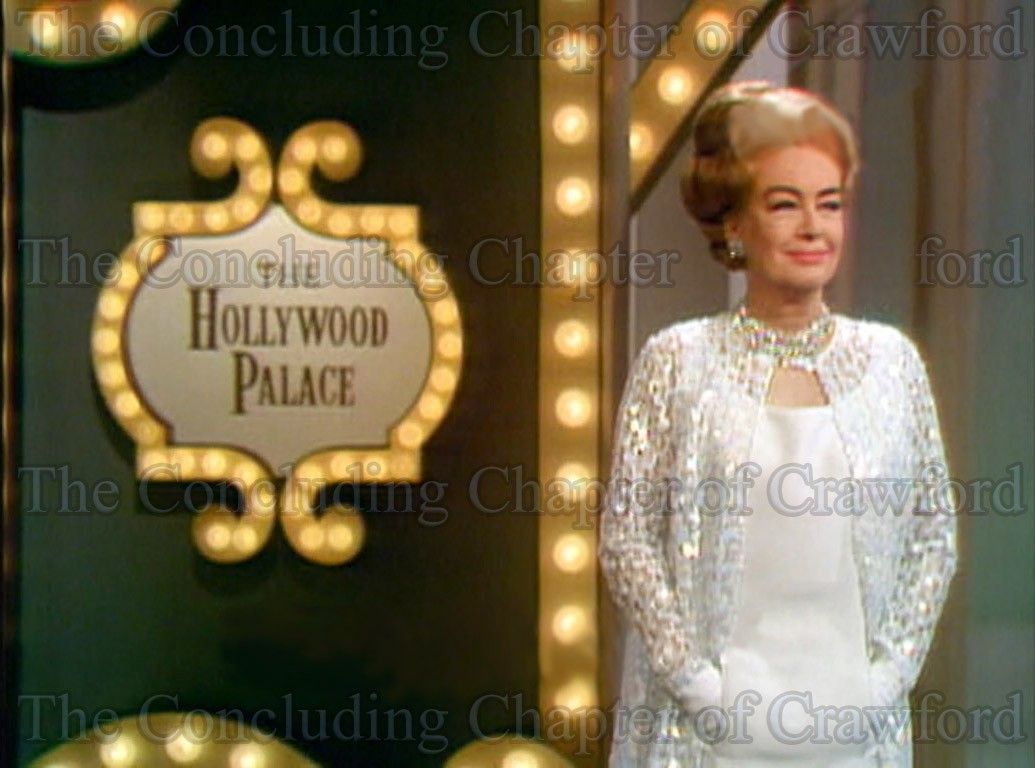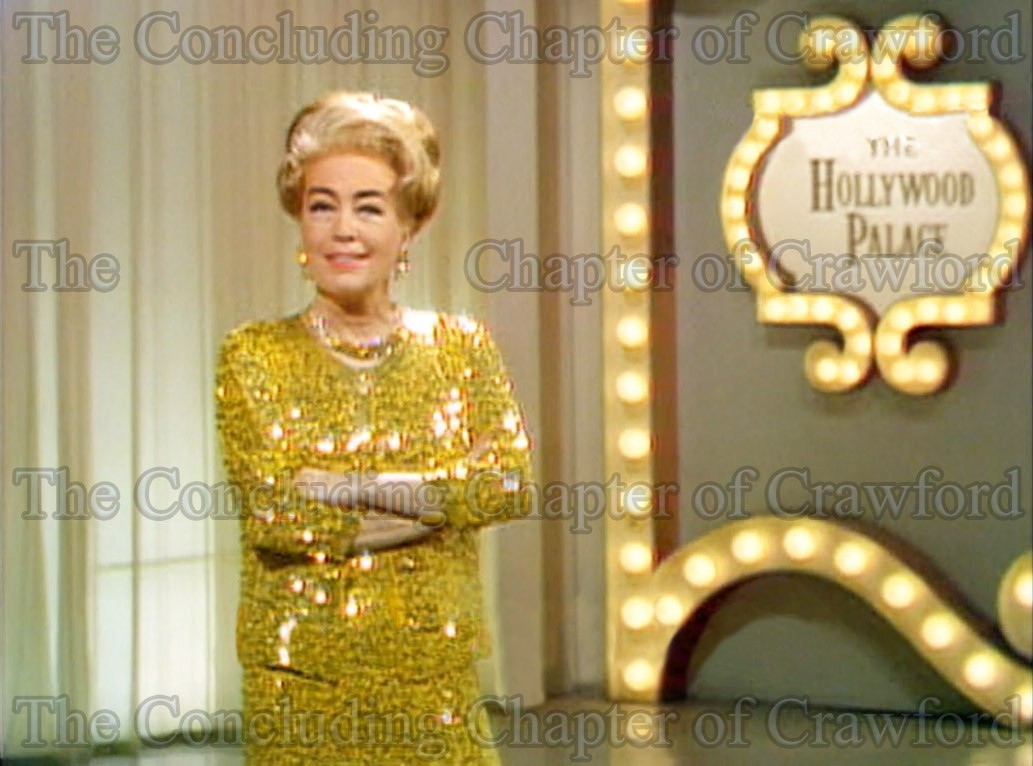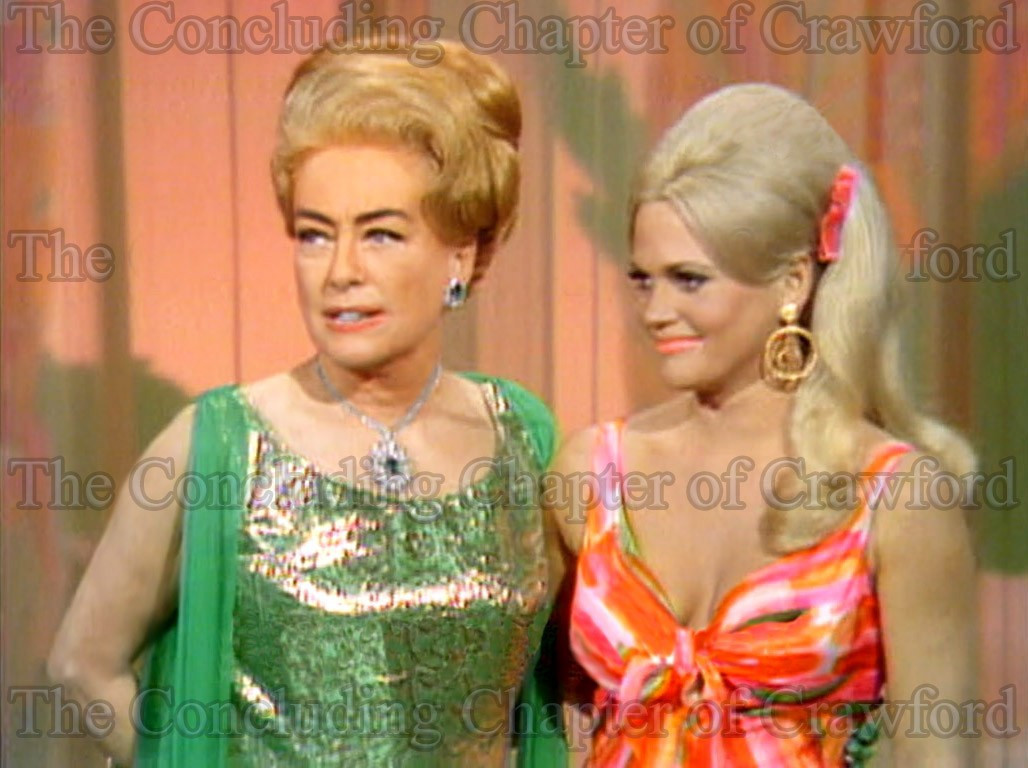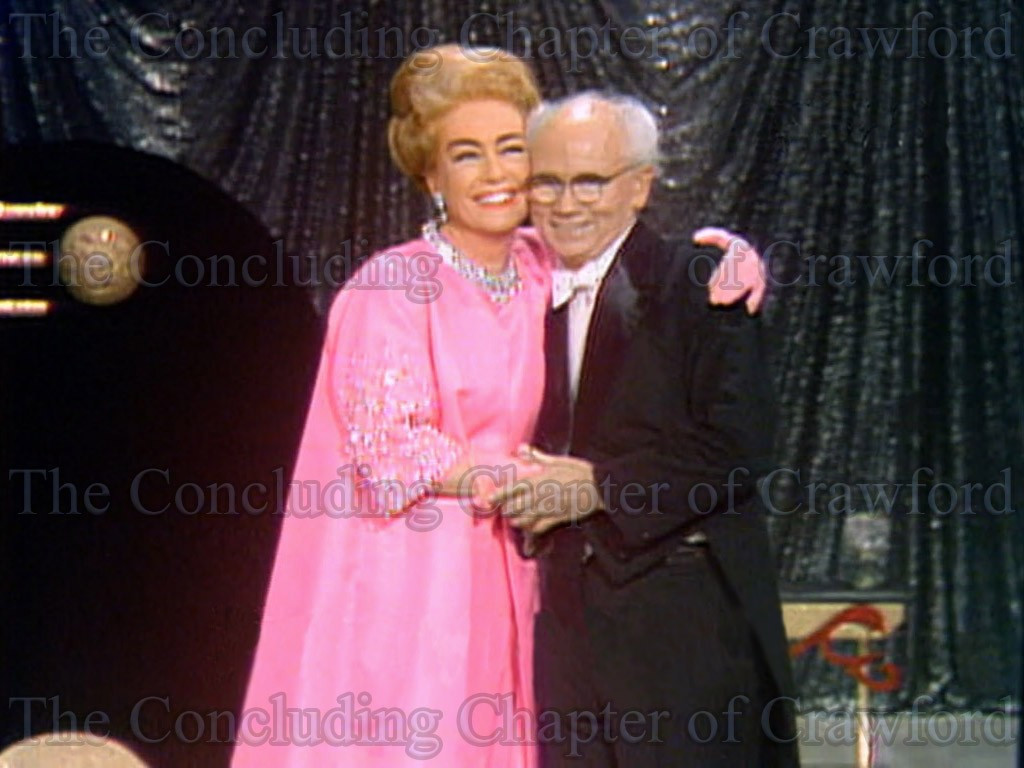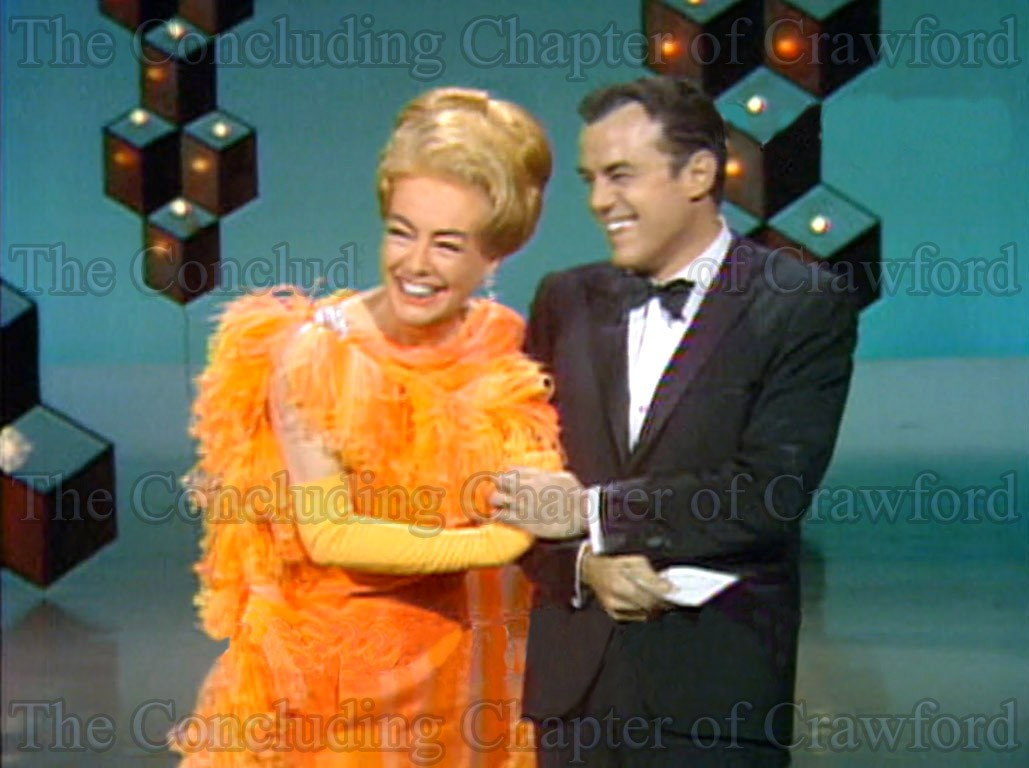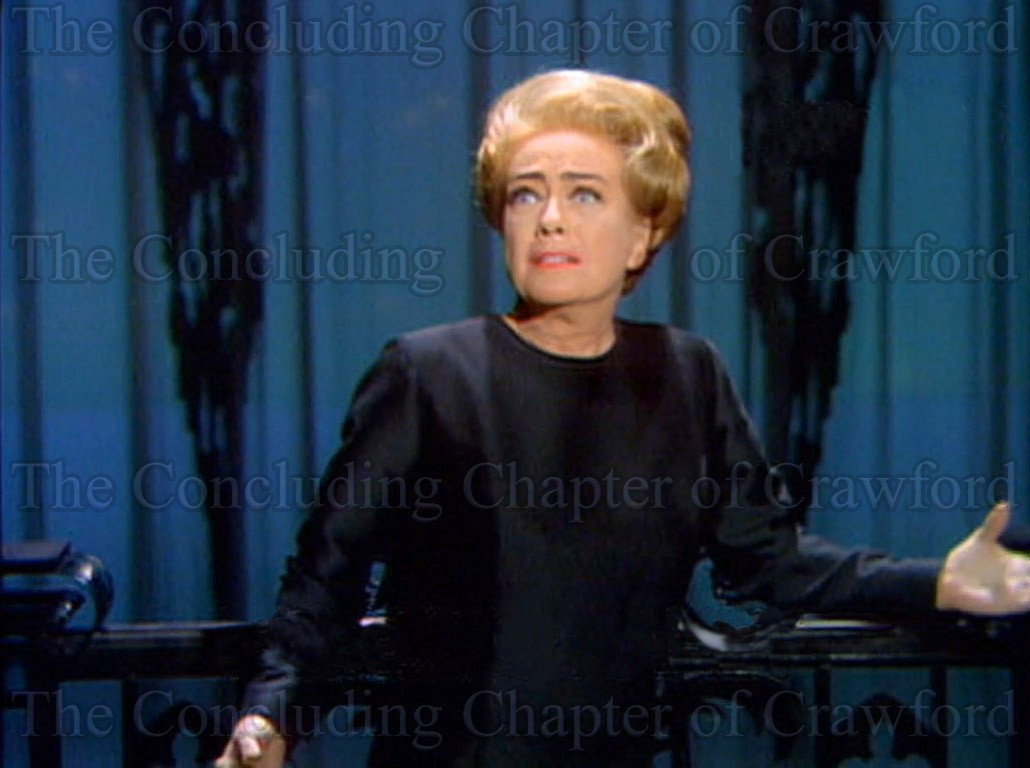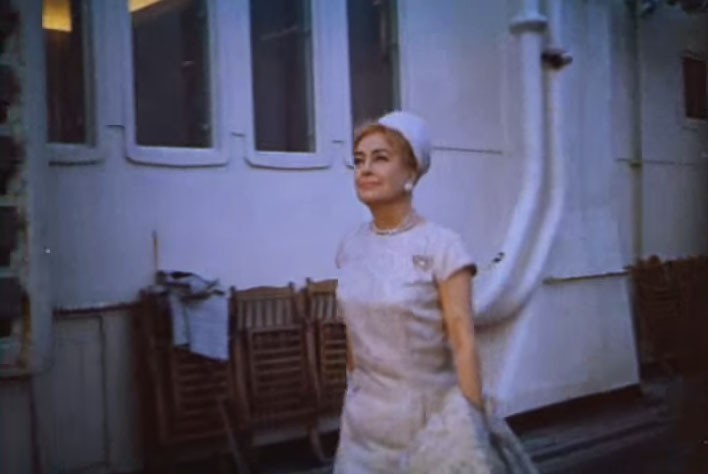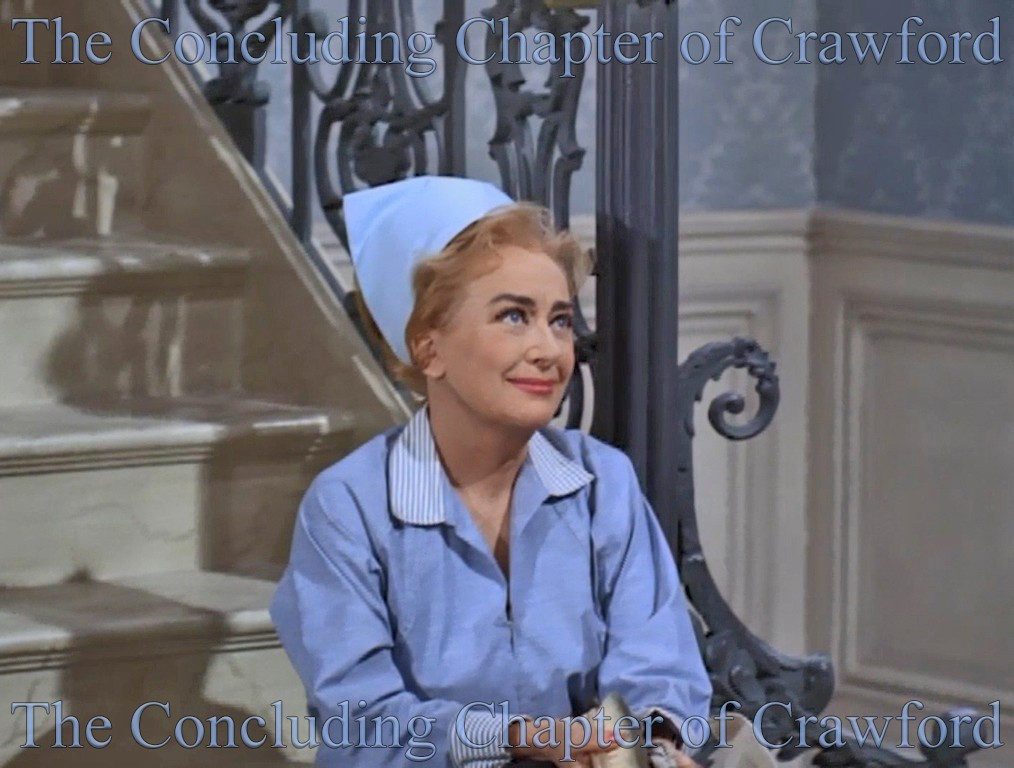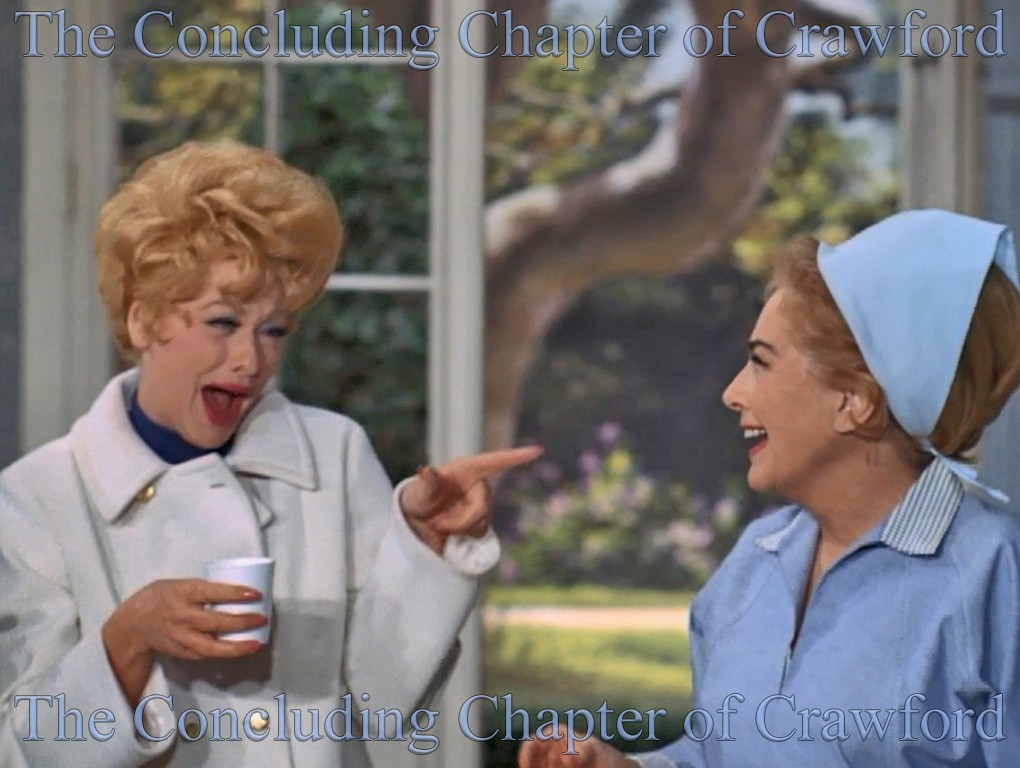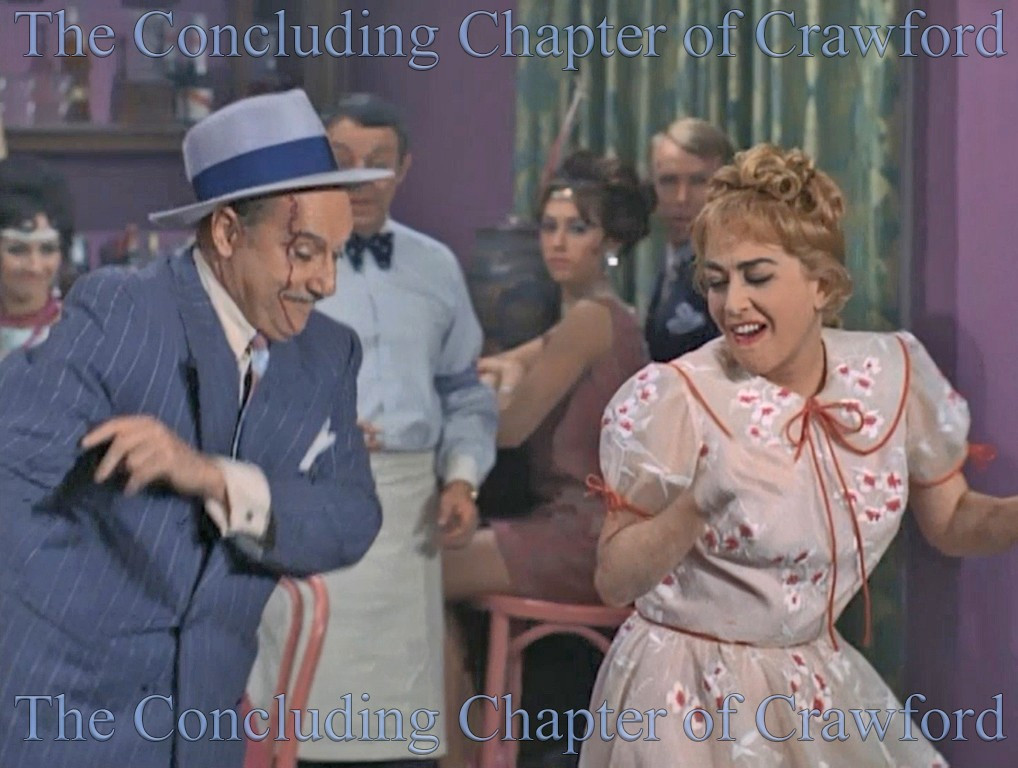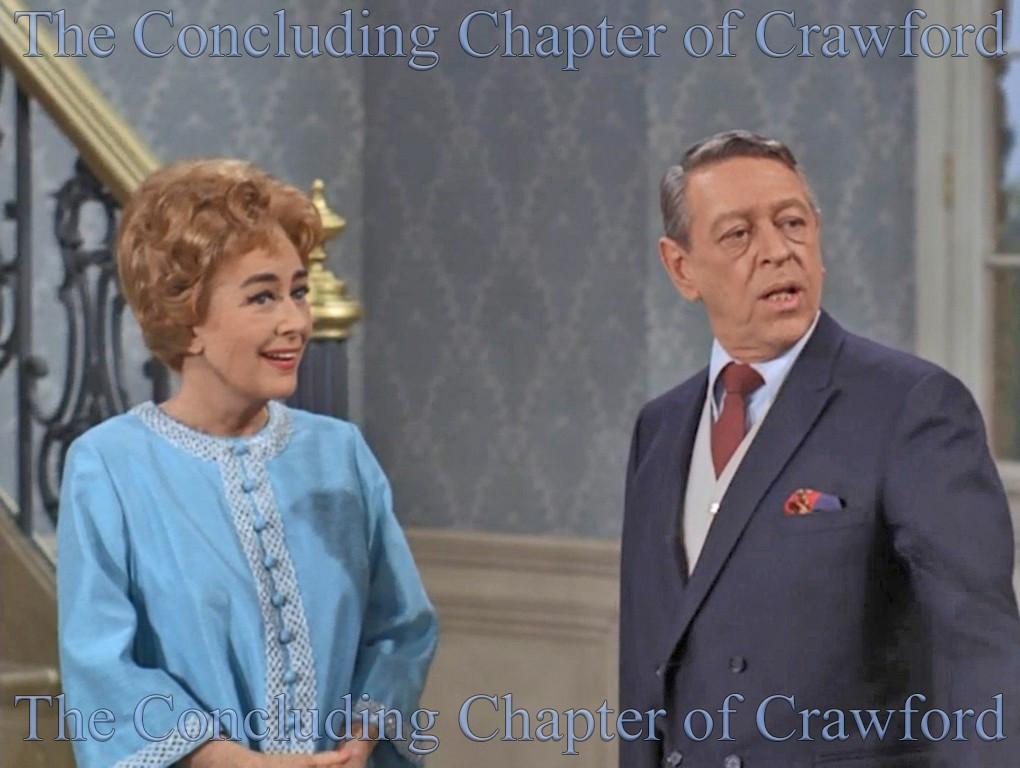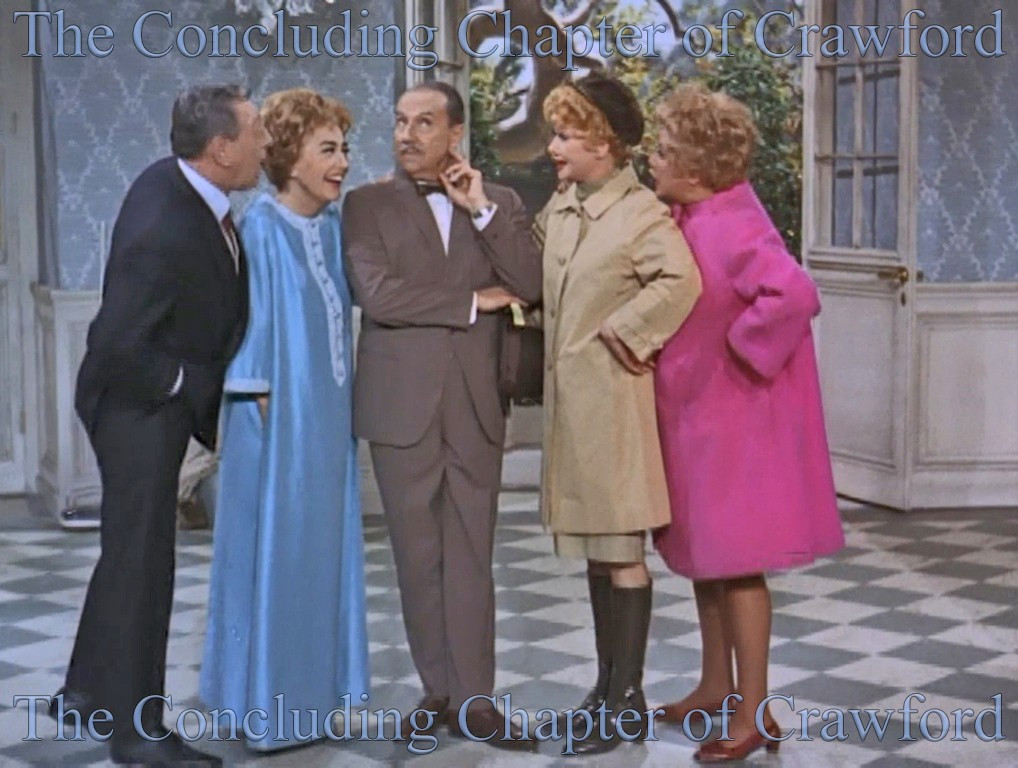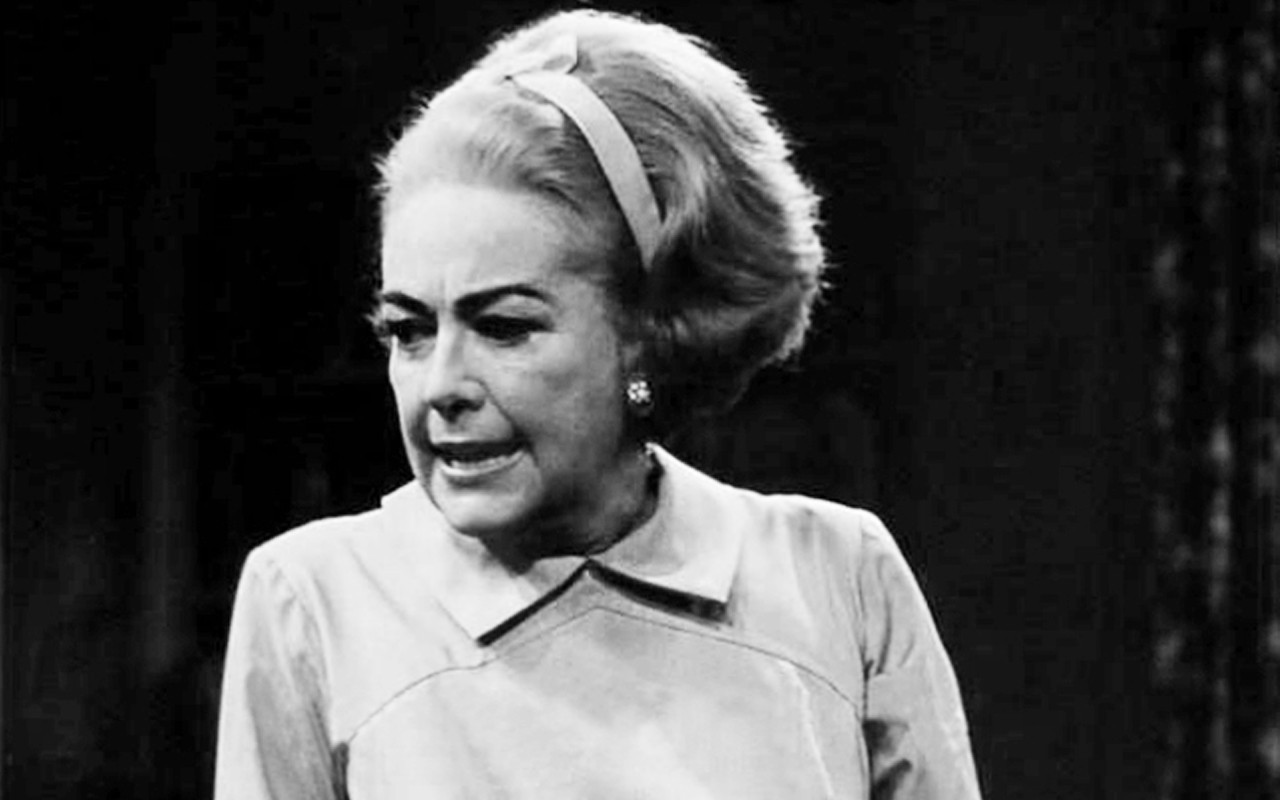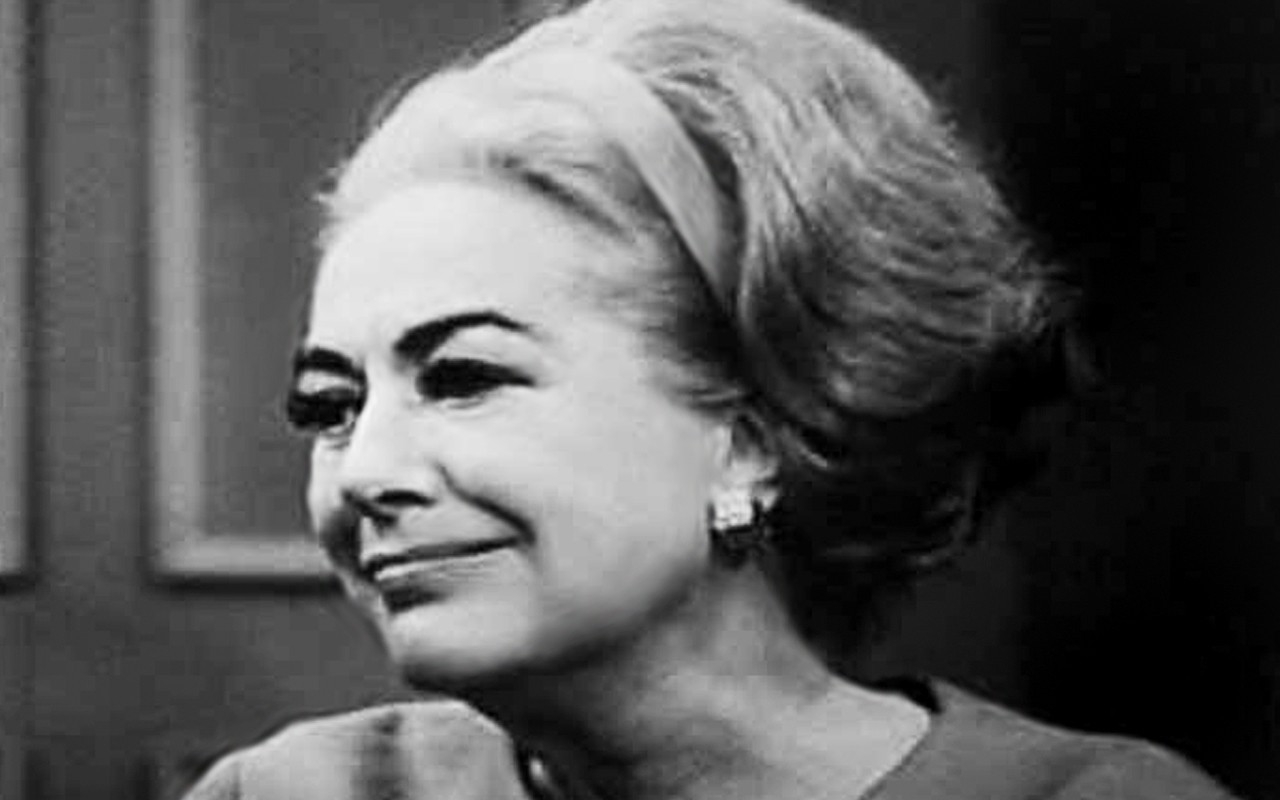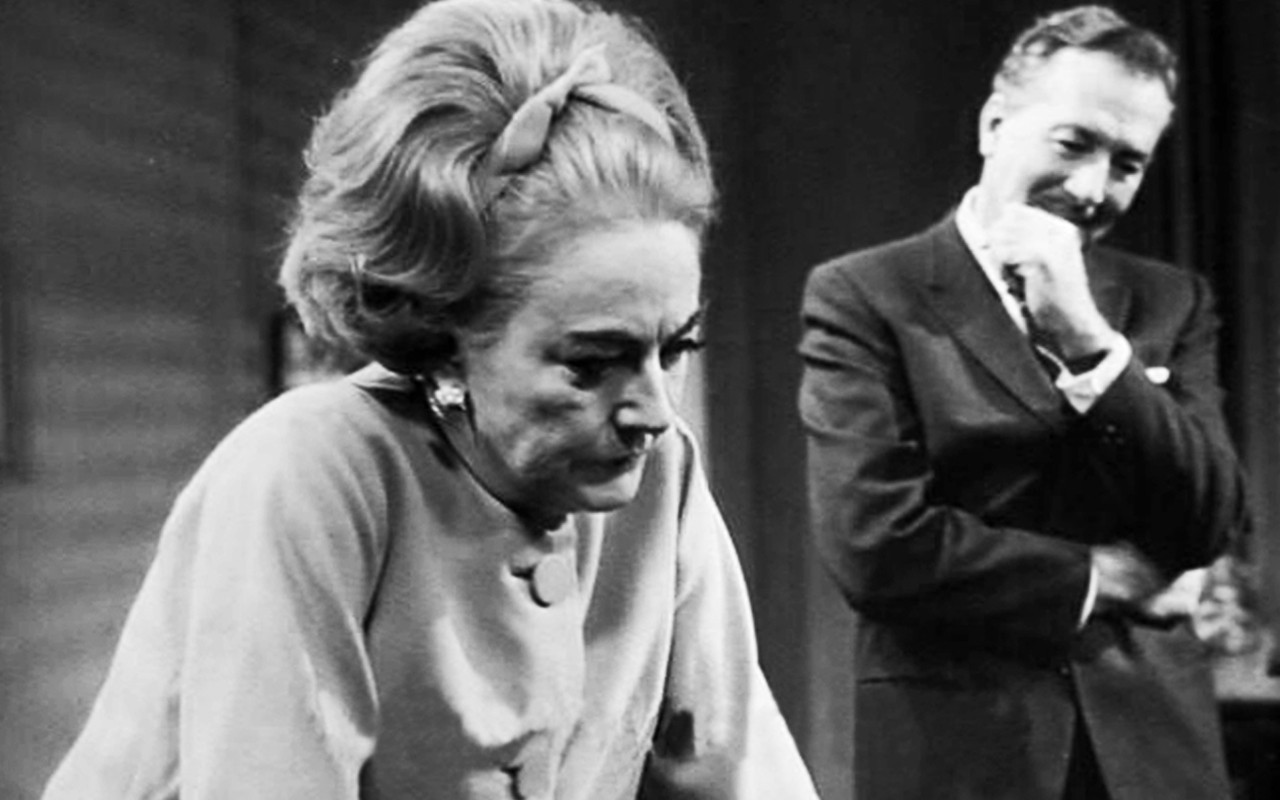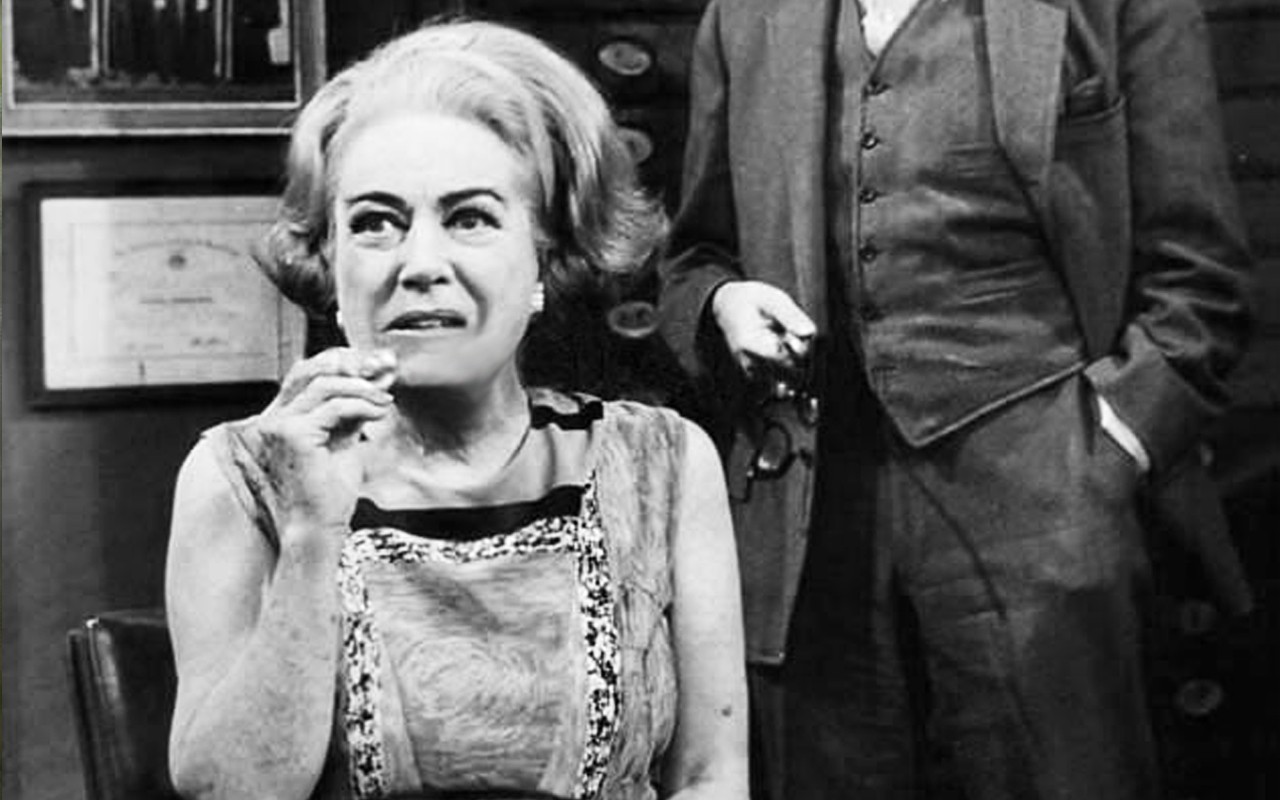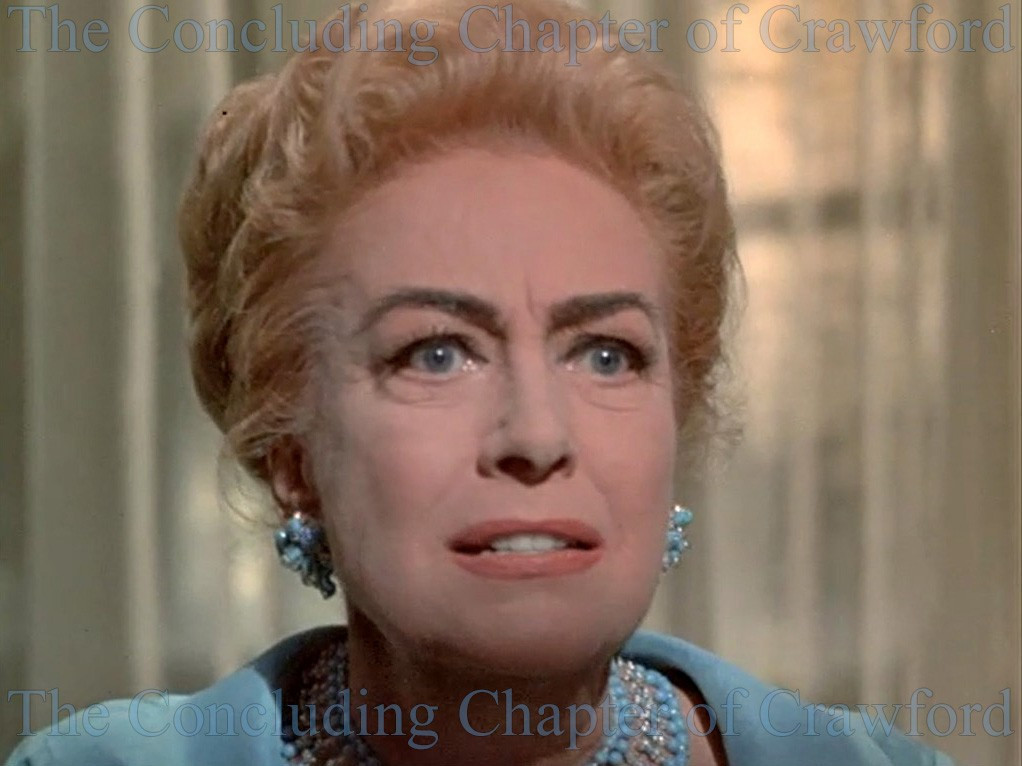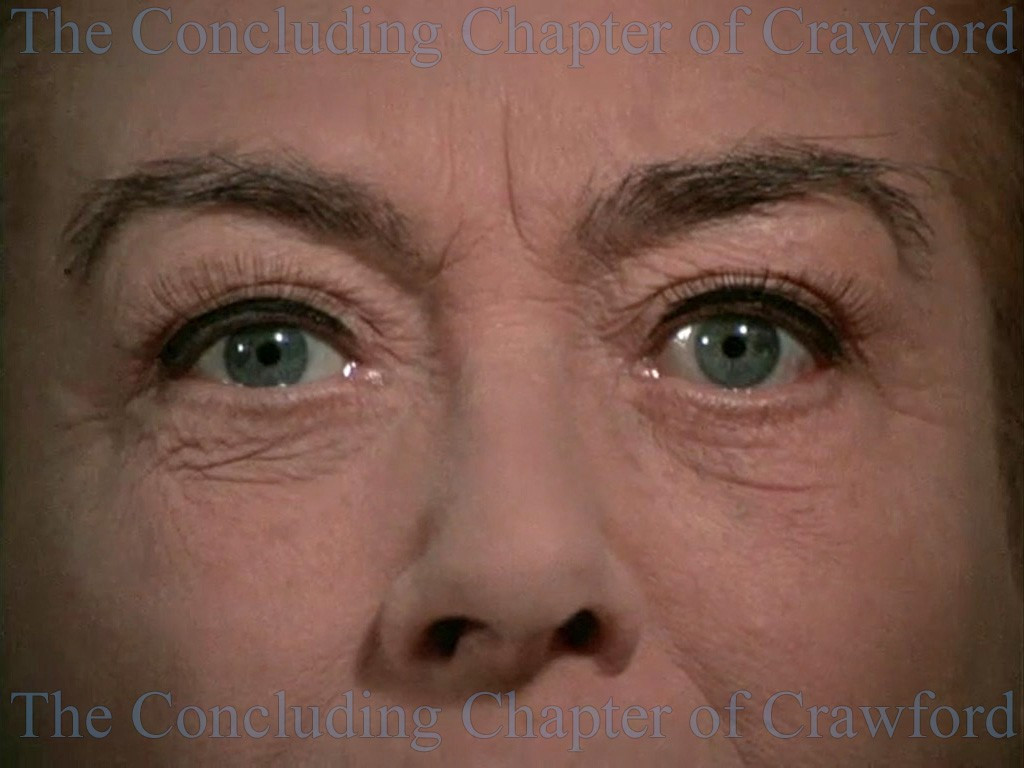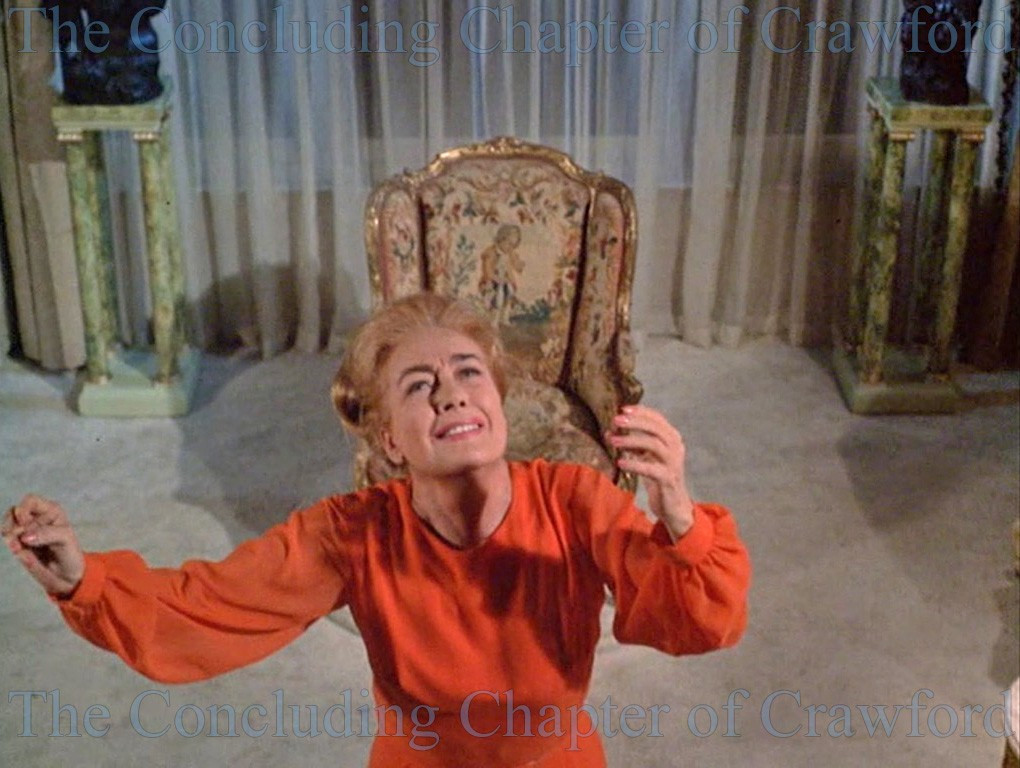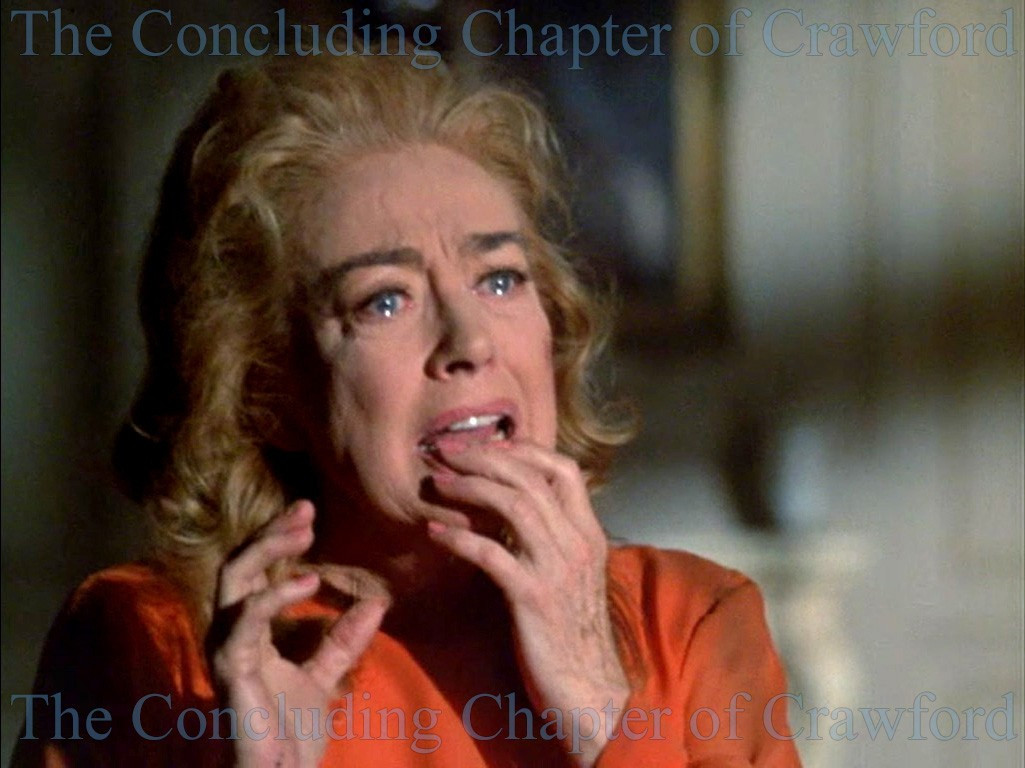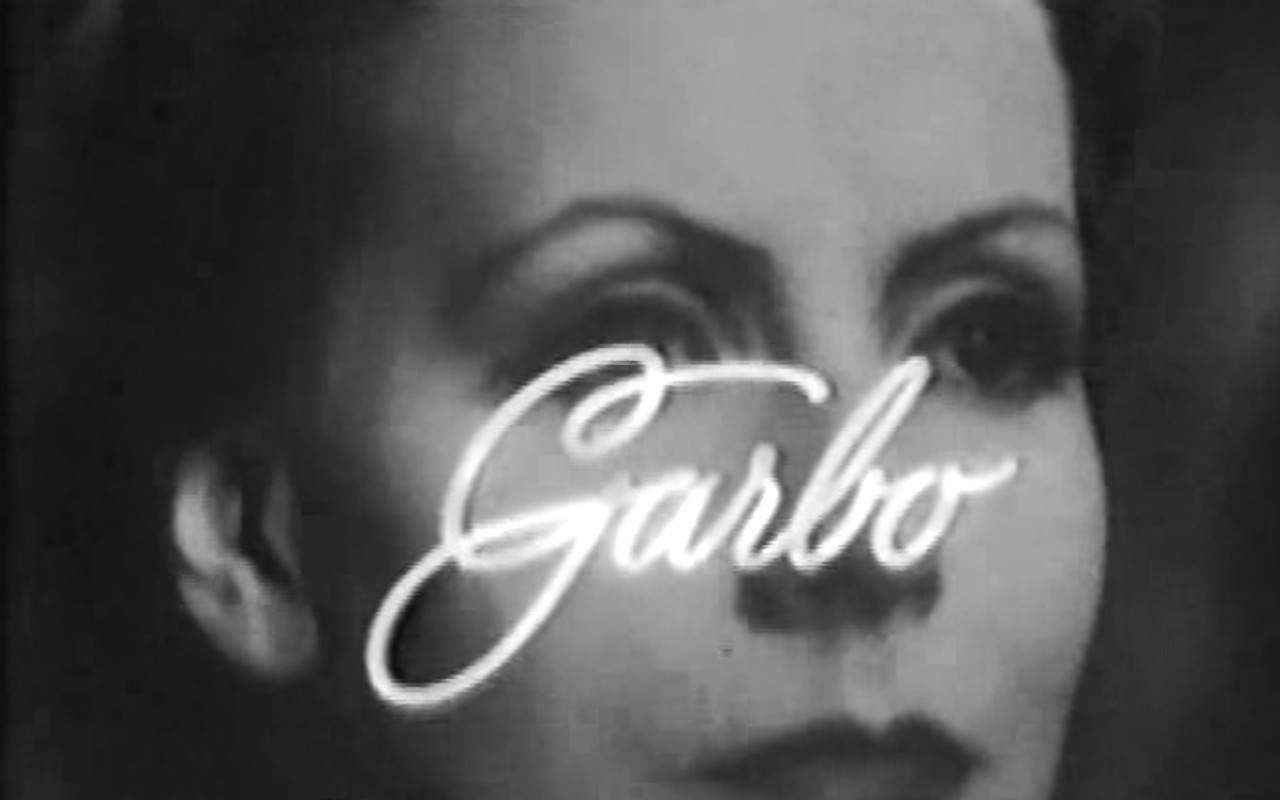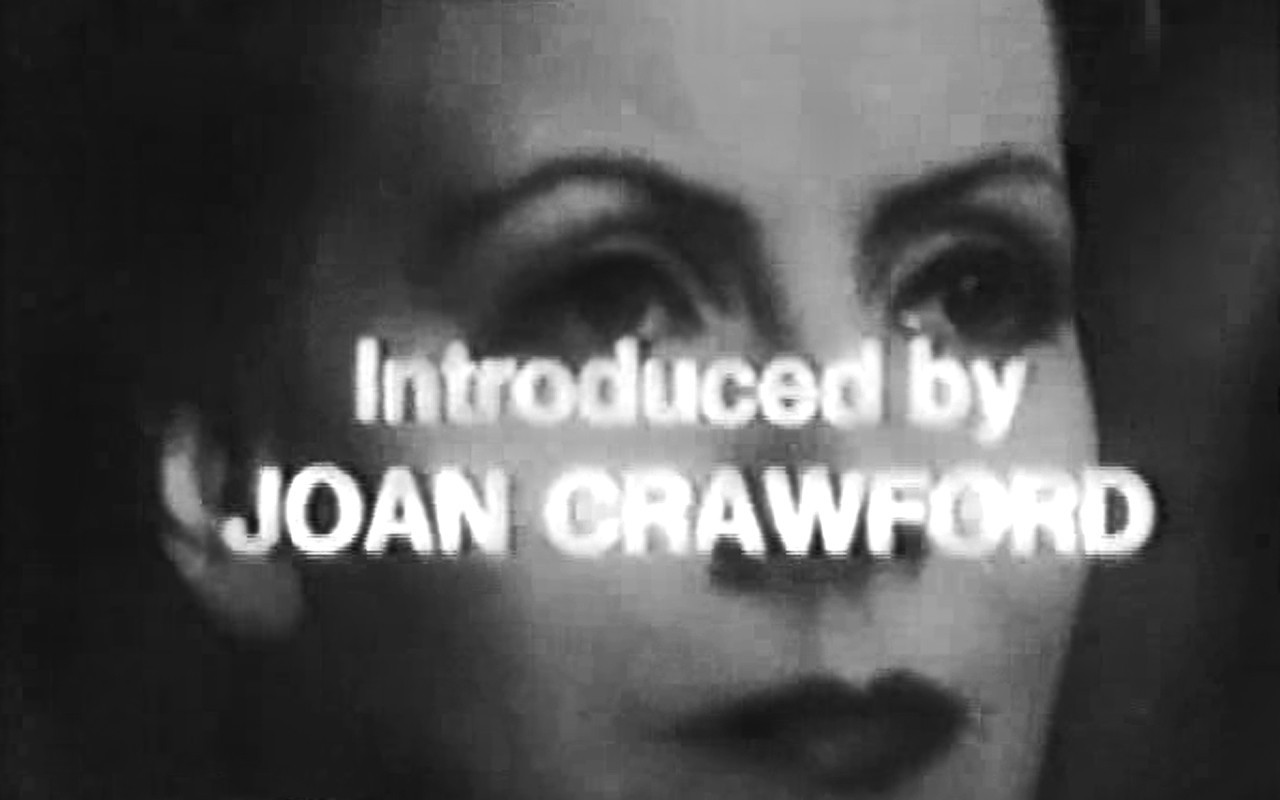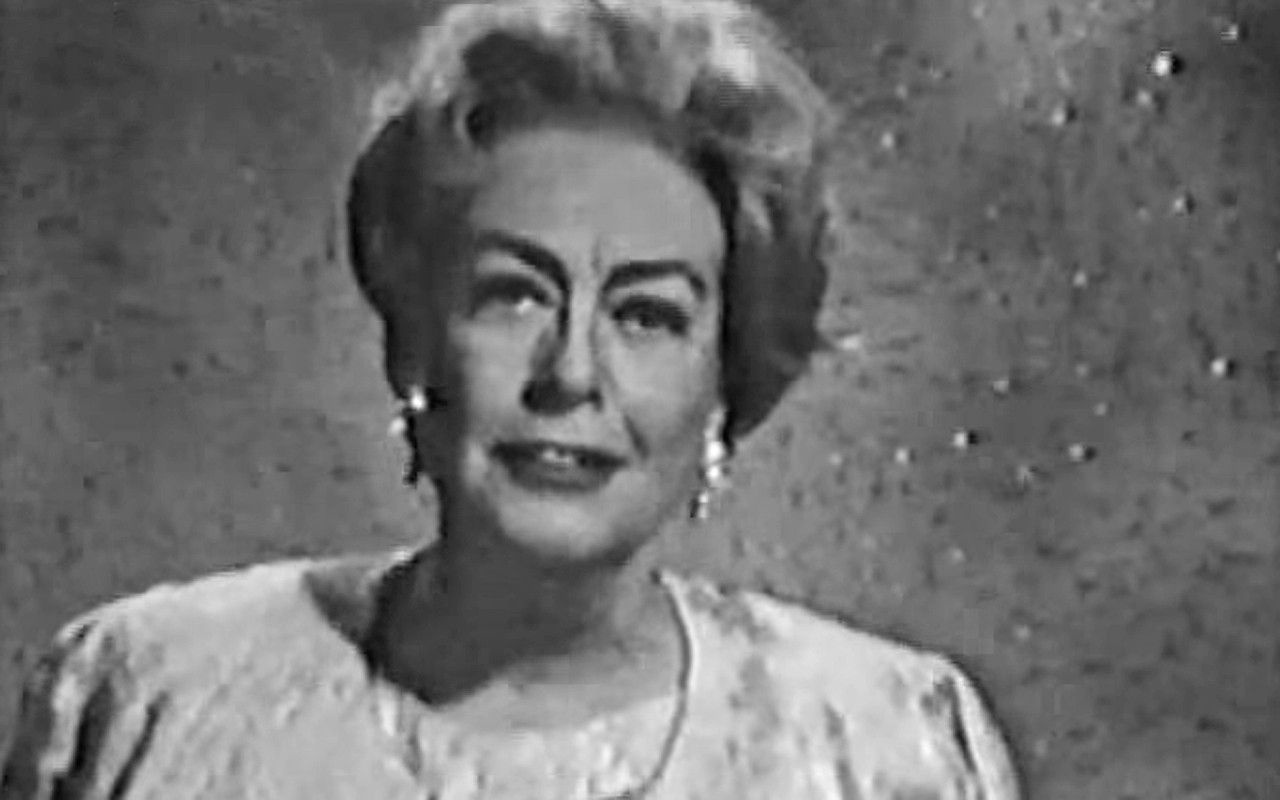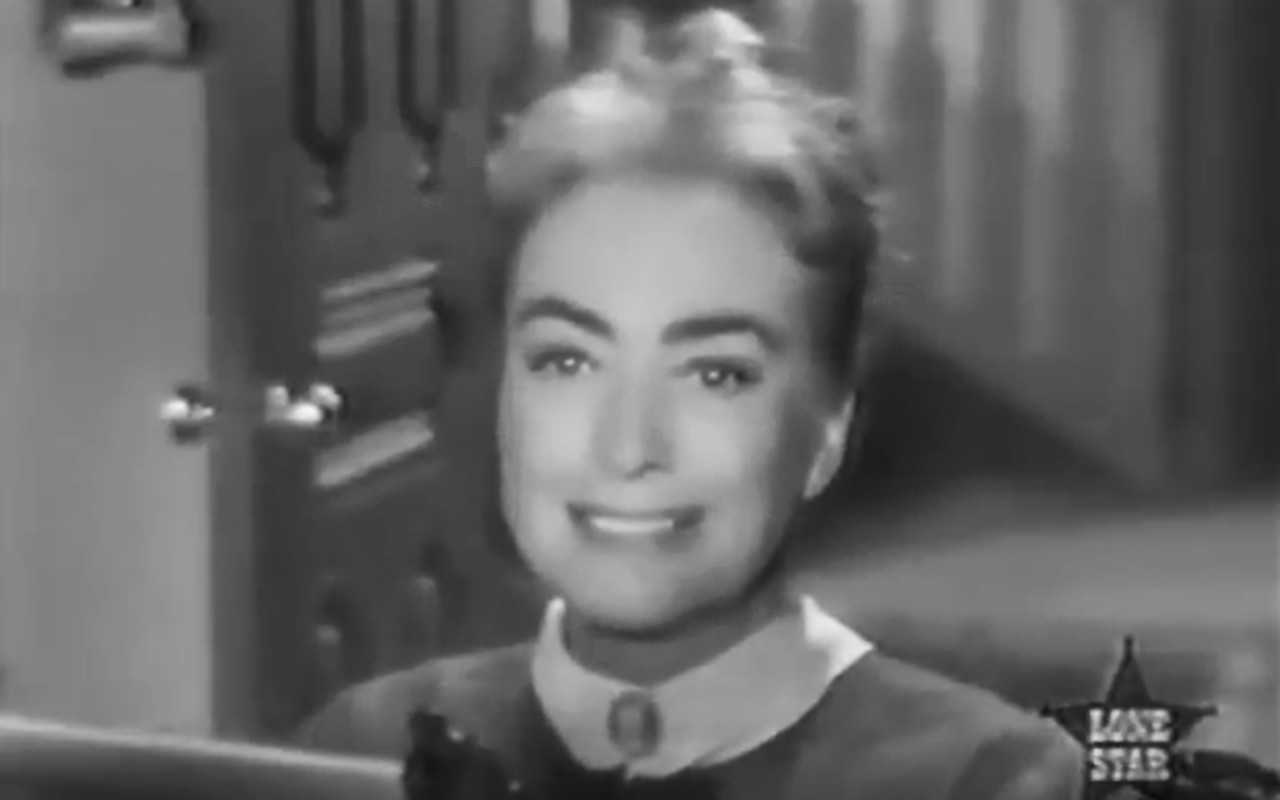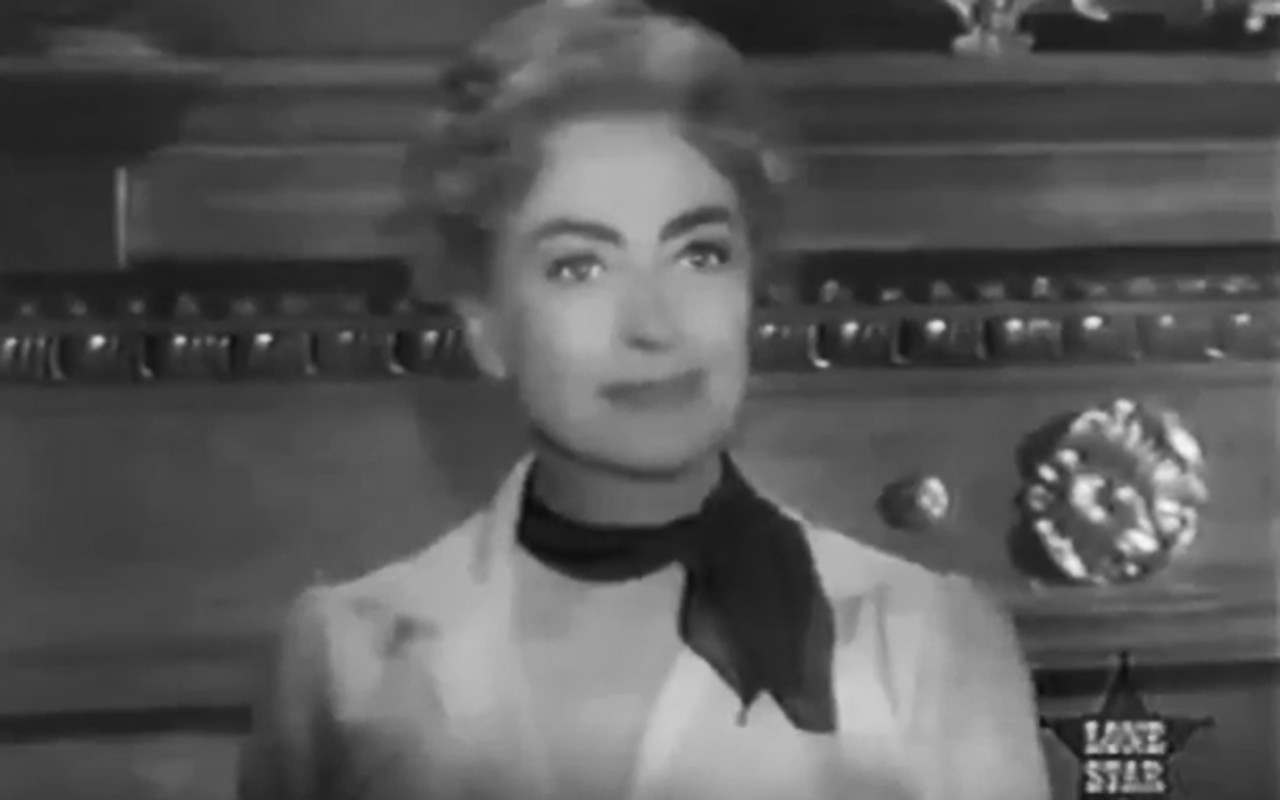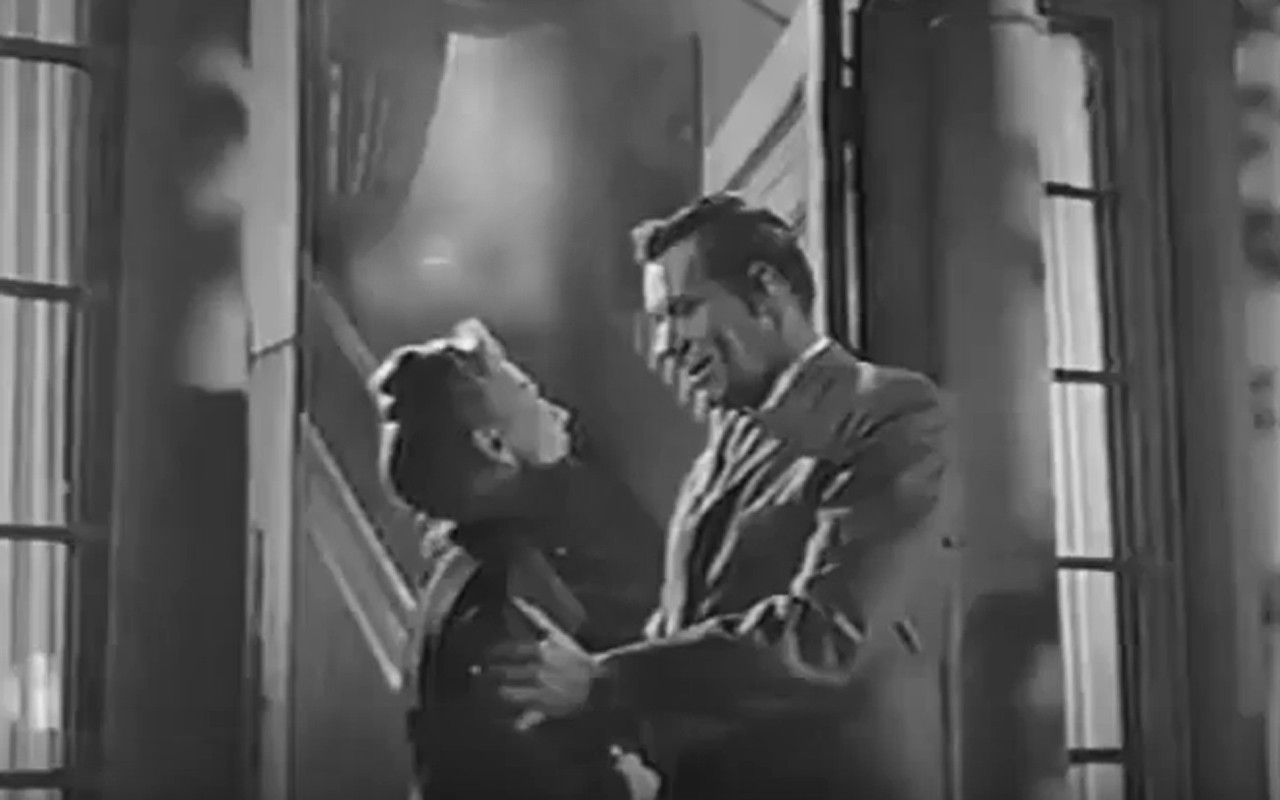Professional Television Appearances (1960 - 1969)
"Startime" (1960) | "The Bob Hope Show" (1960) | "Zane Grey Theater" (1961) | "The Dupont Show of The Week" (1961)
"Route 66" (1963) | "Royal Bay" (aka "Della") (1964) | "The Hollywood Palace": 1965 appearance | 1967 appearance
"The Man From U.N.C.L.E." (1967) | "This Was The Mary" (1967) | "The Lucy Show" (1968)
"The Secret Storm" (1968) | "Night Gallery" (1969) | "Garbo" (1969)
"The Bob Hope Show" (1960)
Premiered: October 3rd, 1960
Duration: 60 minutes
Episode synopsis:
This was the premiere episode of season 10. Also on this episode are singers Patti Page and Bobby Darin. During Joan's appearance, she and Bob Hope share a monologue whereby Hope compliments Joan's glamour, and she mentions Pepsi-Cola and her most recent film "The Best of Everything." Joan also mentions plans for an upcoming film, "Return To Peyton Place" (Joan later canceled plans to be in this film).
"Startime" (a.k.a. "Ford's Startime")
Episode: "The Talent Scouts Program"
Duration: 60 minutes
Premiered: February 23, 1960 (NBC)
Episode synopsis: Joan appears on the program as a talent scout sponsoring actress Colleen Dewhurst. Joan and Dewhurst had not previously met each other in person until this episode. Joan mentions during the episode that she had seen Dewhurst on television and was impressed with her acting. Other celebrities who appear on this episode are; Ethel Merman, Tommy Sands, Hugh Downs, composer Richard Rodgers (of Rodgers & Hammerstein) and Maureen O'Hara.
"Zane Grey Theater" (1961)
Character: Sarah Hobbes/Melanie Hobbes (In a dual role)
Episode: "One Must Die"
Duration: 30 minutes
Premiered: January 12, 1961 (CBS)
Episode synopsis:
When John Baylor (Phillip Carey) is summoned to the house of wealthy, but ill, Thaddeus Hobbes (Carl Benton Reid) to draft his last will and testament, he meets Hobbes' twin daughters, Sarah and Melanie (Joan Crawford) in individual encounters. Shortly afterword, Hobbes dies while arguing with Melanie about the will, which only includes Sarah. At the funeral for her father, Sarah tells John that she's afraid to return to the family home because of Melanie.
When Baylor later visits Melanie at the family home, she attempts to seduce him, but he pushes her away, to which an enraged Melanie runs away. Baylor later finds Sarah, who says she's locked Melanie in her room. When John goes to the room looking for her, Melanie isn't there. Sarah tells John she is there and points to her clothing on the bed claiming it's Melanie. John realizes that "Melanie" doesn't exist and that Sarah has a split personality. Comprehending that "Melanie" isn't real, Sarah decides to burn the house down as a means of ridding herself of "Melanie" for good.
Cast & Crew:
Director: Lewis Allen
Written by: Walter Germano
Producer: Four Star Productions
Joan Crawford - "Sarah/Melanie Hobbes"
Phillip Carey - "John Baylor"
Carl Benton Reid - "Thaddeus Hobbes"
Production:
Joan signed her contract with producer Aaron Spelling to appear in this episode in mid-September 1960. The episode was written especially for Joan.
Joan filmed her scenes for “One Must Die” from October 10th - 14th, 1960.
On October 6th, MCA attempted to prevented Joan from filming the "Zane Grey Theater" segment due to a prior contractual agreement, citing Joan was to be used by Revue Productions, a MCA subsidiary, on the dates planned for the filming of “One Must Die.“
Joan began filming of “One Must Die” on October 10th after explaining to producer Dick Powell that she is “willing and available.”
One day during filming actress Carolyn Jones (Spelling's then-wife) visited Joan on the set, and later sent Joan a gallon of home made vegetable soup.
The following day, Joan had her chauffeur deliver a 10-pound home-made meat loaf to Jones.
"The Dupont Show of The Week" (1961)
Episode: "The Ziegfeld Touch"
Duration: 50 minutes
Premiered: October 1961 (NBC)
Episode synopsis: Joan hosts the episode, which details the history of the Ziegfeld theater. Joan is shown throughout the show, adding commentary.
Production:
In early July 1961, the show's producer, William Nichols, signed Joan to narrate and host “The Ziegfeld Touch” on the “Dupont Show of The Week.”
The episode was originally scheduled to air on Sunday, November 26th, however, it was rescheduled to Sunday, October 28 1961.
The program was originally slated to be filmed in color, however, was ultimately filmed in black and white.
"Route 66" (1963)
Character: Morgan Matheson Harper
Episode: "Same Picture, Different Frame"
Duration: 60 minutes
Premiered: October 4th, 1963 (CBS)
Episode synopsis:
As the citizens of Poland Springs, Maine are confused by someone occupying the city's old mill, local horse rancher Morgan Matheson Harper (Joan Crawford) is left a painting at her stables indicating that her psychotic artist ex-husband, Eric (Patrick O'Neal), has located her and is the area. Following a series of near-misses with Eric harassing her, Morgan is saved by Linc Case (Glenn Corbett). Morgan explains to Linc that Eric is mentally unstable, and that she was his artistic muse, and she feels this is the reason he is harassing her. Later, Linc saves Morgan again from being shot by Eric, who misses and accidentally shoots Morgan's ranch assistant.
Eric later abducts Moran and Linc at gunpoint and forces them to go with him back to the city's old mill, where he's been in hiding, so that he can paint a portrait of Morgan and Linc together. On their way, they pass Linc's friend Tod (Martin Milner), who notices that something is amiss, and follows the three back to the old mill, where he summons the police to come. At the mill, when Linc spots the opportunity, he distracts Eric while Morgan runs out, with Eric chasing her. As Eric, with a gun in hand, runs out of the mill after Morgan he is shot by the police. Eric dies as Morgan holds him professing she is sorry this happened to him, and that she feels responsible for his death. The episode ends with Morgan turning away from Eric's body and walking away.
Cast & Crew:
Director: Phillip Leacock
Written By: Stirling Silliphant and Herbert B. Leonard
Producer: Screen Gems
Joan Crawford - "Morgan Matheson Harper"
Glenn Campbell - "Linc Case"
Patrick O'Neal - "Eric Harper"
Production:
For location filming, Joan traveled with the production team to Monmouth, Maine. Where locals were enchanted by her visit.
Filming for the episode took place in early September 1963.
"Royal Bay" Episode "Once Before Dark" (aka "Della") (1965)
Character: Della Chapel
Episode: Pilot (Later sold as a television film and shown throughout the late 1960s in syndication)
Duration: 65 minutes
Premiered: 1965 (later sold into syndication)
Episode synopsis:
Della Chapel (Joan Crawford) is the infamously wealthy reclusive of the town of "Royal Bay." When attorney Barney Stafford (Paul Burke) becomes intertwined in her life while attempting to encourage her to sell property she owns for development and job growth for the community, he becomes infatuated with her daughter Jenny (Diane Baker). Jenny suffers from a rare disease which makes her allergic to bright light, in particular to the sun. Therefore, Della and her daughter live in a secluded mansion and are only active after nightfall. Unknowing of Jenny's illness, Barney begins to feel Della is more of a prison warden over Jenny than a mother. Therefore, Barney begins encouraging Jenny to leave the house, but she knows she can't. Barney interprets this as being due to the influence of her mother.
After heated a exchange with Barney, Della reveals the true to him, and he decides it's best for him to leave Jenny and her mother alone. Jenny overhears this, and after Barney leaves the mansion Jenny runs away. While speeding down the road in her car, Jenny loses control and her car plummets over a cliff and she is killed. Following the accident, Della meets with Barney and further explains her relationship with Jenny, and asks to oversee a project to build a place in the city for the enjoyment of children in the memory of Jenny. After Barney leaves, Della proceeds to open all the closed curtains throughout the house.
Cast & Crew:
Director: Robert Gist
Written By: Richard Alan Simmons
Producer: Four Star Productions, Joan Crawford (executive producer without credit)
Joan Crawford - "Della Chapel"
Paul Burke - "Barney Stafford"
Diane Baker - "Jenny Chapel"
Charles Bickford - "Hugh Stafford"
Production:
This was the pilot episode for the series "Royal Bay," which Joan co-produced along with "Four Star Productions." Throughout 1963, Joan and Four Star Production's executive Tom McDermott attempted to sell the series to several networks, however, none were interested. Ultimately, Joan and McDermott decided to film the series pilot and try to sell the series to a network with the pilot episode in-hand.
Filming took place from October 11th, 1963 to October 30th, 1963. During filming, Joan commented to a reporter that she felt the series may not be purchased by a television network, and if not, it would be edited into a television film.
It was reported in March 1964 that the pilot was scheduled to be added to the 1964 fall line-up, however, that did not happen and "Royal Bay" ultimately premiered on television in 1965 as a movie of the week with the title "Della."
Had the series sold, Paul Burke was to receive 25% of the series' profits, along with top billing.
This was the third and final collaborative project between Joan and actress Diane Baker. Baker had previously worked with Joan in two feature films;
"The Best of Everything" in 1959, and "Strait-Jacket," which was filmed only two months prior in July and August 1963.
In 1988, the company "International Film Forum" unofficially released "Della" on VHS, and retitled it "Fatal Confinement." However, the title "Fatal Confinement" was used solely on the VHS box cover, with the title of "Della" still appearing on-screen during the opening credits.
Click here to read the production schedule.
Click here to read the entire shooting script.
Webmaster's Note: Despite what has been said in some online sources, this project was not intended to be a weekly series starring Joan Crawford, however, she was a producer on the project and planned to be a regular guest star if it did become a series. The intended plot of the series was meant to rotate around the four sons of Hugh Stafford (Charles Bickford), with the episodes being dedicated to a predicament or situation involving one of the four sons.
"The Hollywood Palace" (1965)
Episode: Season 3, episode 4
Duration: 60 minutes
Premiere: October 9, 1965
Episode synopsis:
Joan greets the audience and she is shown throughout the episode introducing each act performing. Among those performing during the episode are: singer Jack Jones (Joan's godson), singer Joanie Sommers (who, at the time, was the 'voice' of Pepsi-Cola, with her singing featured in most of their television advertisements) and comedians Allen & Rossi. The episode concludes with Joan reciting "A Prayer For Little Children," written by Milton Geiger. The dramatic reading is directed by Robert Gist. Joan has a total of four wardrobe changes during the episode.
Production:
Joan signed her contract for this episode on June 18th, 1965 (she was paid $10,000.00 for her appearance). Click here to view Joan's contract for the episode.
Joan taped her appearance for the episode on September 24th, 1965.
"The Hollywood Palace" (1967)
Episode: Season 7, episode 29
Duration: 60 minutes
Premiered: April 22, 1967
Episode synopsis: Joan serves as the episode's host, and greets the audience at the show's opening. Later in the episode, Joan performs a comedy skit with Tim Conway, and she concludes the episode by reading "The Dreamer" by Milton Geiger.
Click here to read the complete shooting script, with deleted scenes. Click here to read this episode's shooting schedule, cast list and cost report.
"The Man From U.N.C.L.E." (1967)
Character: Amanda True
Episode: Season 3, Episode 28 "The Five Daughters Affair" (later released theatrically as "The Karate Killers")
Duration: 60 minutes
Premiered: March 31, 1967 (NBC)
Episode synopsis:
Following the sudden death of her scientist husband Simon True (Jim Boles) from an apparent heart attack, THRUSH mastermind Randolph (Herbert Lom) visits Amanda True (Joan Crawford) to find documentation about the secret formula Dr. True had been working on to transform water into gold.
When Amanda is oblivious to any knowledge of the formula, it angers Randolph, who then lets Amanda know it was he who caused her husband's death by having Amanda give him "vitamins" that were actually poison. Enraged, Amanda attempts to stab Randolph with a nearby letter opener, however Randolph stops her attempt. The scene closes with THRUSH agents closing in around her as she pleads for forgiveness for unknowingly participating in her husband's death.
In the next scene, U.N.C.L.E. agents Napoleon Solo (Robert Vaughn) and Illya Kuryakin (David McCallum) arrive at Amanda's house to question her, but find the house ransacked and Amanda missing. As Napoleon talks with Dr. True's daughter from a previous marriage (Kim Darby), who has also just arrived to the house, Illya discovers Amanda's dead body laying on the floor under a window curtain.
Cast & Crew:
Director: Barry Shear
Written By: Boris Ingster (Story), Norman Hudis (Teleplay)
Producer: Metro Goldwyn Mayer
Joan Crawford - "Amanda True"
Robert Vaughn - "Napoleon Solo"
David McCallum - "Illya Kuryakin"
Herbert Lom - "Randolph"
Kim Darby - "Sandy True"
Jim Boles - "Simon True"
Production:
For the production, Joan returned to the MGM Studios lot for the first time in 14 years, in February 1967. Originally filmed as a two-part episode entitled "The Five Daughters Affair," this episode was later released theatrically as "The Karate Killers."
Webmaster's Note: There are two versions of Joan's scenes from this production available. They are parallel in dialogue, however, one version's camera angles are slightly different than the other version. Also, Joan and the other actors deliver some of their dialogue in a slightly different manner.
There is a life mask of Joan Crawford in existence, which is believed by this Webmaster to have been created for this project. For the scene involving the discovery of Amanda's body, it is obvious to the viewer they are looking at a dummy with a "mask" of Joan Crawford on it, rather than at the actual Joan Crawford appearing in this brief shot.
"This Was The Mary" (Documentary) (1967)
Premiered: August 1967
Synopsis: Joan narrates, and appears briefly with her daughter, Christina, at the beginning on this documentary, which documents the history of the Queen Mary ship. The documentary is in honor of the ship's retirement in August 1967.
"The Secret Storm" (1968)
Character: Joan Borman Kane
Duration: 30 minutes
Premiered: October 25th, 28th, 29th, 30th, 1968 (CBS)
Episode synopsis:
Joan portrays the character of "Joan Borman Kane" on four episodes in October 1968. During these episodes, the character is engaged in divorce discussions with her husband, "Nick" (Keith Charles).
Cast & Crew:
Director: Gloria Monty
Producer: Columbia Broadcasting System (CBS)
Joan Crawford - "Joan Borman Kane"
Keith Charles - "Nick Kane"
Terry O' Sullivan - "Judge Sam Stevens"
Larry Weber - "Peter Ames"
Production:
After Joan's daughter, Christina, was hospitalized for an ovarian tumor on October 15th, Joan agreed to substitute her daughter's role until she could return. Joan rehearsed her scenes for the show on October 18th, and 19th. Joan's scenes for all four episodes were taped on October 20th, 1968.
Director Gloria Monty felt Joan did a wonderful job during the rehearsals, however, thought Joan was inebriated during the episodes' taping.
For her services, Joan was paid $3,500, for which she gave to her hairdresser.
CBS reported an increase in viewers of the soap opera during the week Joan guest-appeared.
Much has been said regarding Joan replacing her daughter on this show, however according to Gloria Monty, Joan did so out of fear of her daughter losing her role on the soap opera during her illness, and because show director Gloria Monty asked Joan to do so.
The following is a 1979 quote from show director Gloria Monty:
"Joan called me to go to Christina's apartment. She called the doctor to go there, and from her own bedside, because she was ill, called the ambulance to take Christina to the hospital. Joan also sent her secretary, Betty Barker, to see that everything went smoothly for Christina.
The only reason Joan was not there was because she was ill with the flu and the doctor advised her not to go near Christina.
As soon as Joan was declared noncontagious, Joan planted herself in her daughter's hospital room and saw to it that Christina was well-cared for.
She spoke to all of us on the show about keeping Christina's job open, Joan was afraid her daughter would lose her running part by being absent.
She kept asking us, 'Can I do anything to help her keep it? What can I do?'
It was difficult for me to make Joan understand this was not like the studio days when if you were ill the production had to shut down. She didn't understand that we could write out Christina's character for a while, although the story, at that moment, was at a peak.
One time when Joan asked 'What can I do?" I said 'Play the part for us.'
She said 'OK, I'll do Christina's part until she comes back.' And that's how she came to do the role on 'The Secret Storm'."
The following is an excerpt from "Joan Crawford: A Biography" by Bob Thomas:
"Fred Silverman, chief of daytime programming at CBS was delighted with the news, and he cleared the use of the studio for rehearsals on Saturday and taping on Sunday. Gloria Monty went to Joan's apartment and found her in a state of excitement.
'I know this character like this.' said Joan, snapping her fingers' It's Mildred Pierce'.
'Okay, let's not talk too much, let's just read the scene' said Monty.
She was amazed how adroitly Joan fell into the character, and at the subtlety she lent to the soap-opera dialogue.
On the day of the taping, Joan grasp Monty and said 'I'm in your hands'."
"The Lucy Show"
Character: Joan Crawford (A fictionalized version of herself)
Episode: "Lucy and The Lost Star" (aka "Lucy and Joan Crawford")
Duration: 30 minutes
Premiered: February 26th, 1968 (CBS)
Episode synopsis:
After Lucy and Vivian have car trouble and seek help at a nearby house, they discover Joan Crawford (portraying herself) in an empty house scrubbing the floors. Unbeknownst to Lucy and Vivian, Joan is happily cleaning her own house preparing for new furniture to be delivered, however they think she's broke and has had to sell all of her belongings. Later that day, Lucy and Vivian visit Lucy's boss, Mr. Mooney (Gale Gorden), to ask for his help in assisting Joan to become a star again. They decide to give Joan a "good samaritan" package of groceries for her earlier help. While delivering the groceries, the three pretend to suddenly recognize Joan, and ask her to perform in a charity show at the local playhouse, thinking it will help her to get film work.
In the play, set in a 1920s speakeasy, Joan dances the Charleston before being shot by her rival, "Rusty," played by Lucy.
The following morning, Lucy, Vivian and Mr. Mooney go to Joan's house after hearing how successful the play was with encouragement to her that she should now be able to get new film offers. Joan informs them she doesn't need to work and that she's not broke.
Cast & Crew:
Director: Jack Donohue
Written By: Ray Singer and Milt Josefsberg
Producer: Gary Morton
Joan Crawford - Herself
Lucille Ball - "Lucille Carmichael"
Vivian Vance - "Vivian Bunson"
Gale Gordon - "Theodore Mooney"
Lew Parker - "Joan's Agent"
Production:
It's reported that Lucille Ball caused much distress to Joan during the show's production, and insisted on firing Joan from the episode and replacing her with Gloria Swanson. According to Ball, she endured Joan arriving late to rehearsals, and drinking vodka on the set.
Webmaster's Note: Ball accused Joan of drinking alcohol excessively while on the set, which, in the opinion of this Webmaster, is possible. Upon viewing of the episode, Joan slurs her speech in several scenes and does appear inebriated throughout the episode. However, Joan was also battling the flu prior to this episode's taping, and it's possible the mixture of her regular daily consumption of alcohol combined with flu medication created this more-pronounced inebriated appearance. Additionally, the "slurs" heard in Joan's speech could very possibly be from hoarseness.
"Night Gallery" (1969)
Character: Claudia Menlo
Episode: "Eyes" (The second segment in the pilot episode consisting of three stories)
Duration: 138 minutes with each segment's runtime being approximately 30 minutes each.
Premiered: November 8th, 1969 (NBC)
Episode Synopsis:
After her doctor, frank Heatherton, (Barry Sullivan) discovers the ability to replace the optic nerve in the eyes to allow temporary vision to the blind, wealthy blind woman Claudia Menlo (Joan Crawford) demands he perform this procedure on her, and allow her to see for approximately 11 hours. When Dr. Heatherton refuses based on the principal it will leave the donor blind, Claudia threatens him with exposing an infidelity, thus blackmailing him into performing the surgery. Claudia uses a similar tactic to force her attorney to perform the legalities of the agreement between herself and the donor, Sidney Resnick (Tom Bosley).
On the night following the procedure, alone in her apartment, Claudia unwraps the bandages at the exact moment the 1965 New York blackout occurs.
Enraged, Claudia thinks the operation was a failure and begins grasping for any object in reach to throw into the darkness. Claudia spends the night attempting to find help in the vacant building she constructed for the purpose to reside in alone.
The following morning, the sun rises to reveal that Miss Menlo had the ability to see the entire time, but now her 11 hours are over and her vision begins to fade rapidly. As she leans her hands against a large picture window, beckoning the sun not to fade, she does not realize the window was cracked severely by her throwing an object against it during the night. The window breaks, causing Claudia to plummet to her death onto the street below.
Click here to read the entire script for this episode, including a deleted scene between Claudia Menlo and her maid which was filmed, however, edited out from the final production.
Cast & Crew:
Director: Steven Spielberg
Written By: Rod Serling
Producer: Universal Pictures
Joan Crawford - "Claudia Menlo"
Barry Sullivan - "Dr. Frank Heatherton"
Tom Bosely - "Sidney Resnick"
Byron Morrow - "George Packer"
Production:
The segments were written by producer Rod Serling, with "Eyes" being taken from his book "The Season To Be Wary," which was published by Little, Brown & Co in 1967.
Serling originally thought of the concept of "Night Gallery" when "The Twilight Zone" ended in 1964. At that time, Serling's series idea wasn't based around oil paintings, but rather wax figures, with the working title of "Rod Serling's Wax Museum."
Serling originally approached studio executive Arthur Joel Katz with the concept of "Night Gallery" via letter on April 30th, 1968. In the letter, Serling suggested the concept of one actor portraying all three main characters in each story of the pilot, and named Rod Steiger as a potential candidate for the lead. In subsequent meetings, that idea was discarded and by December 1968, Serling had Joan Crawford in mind for the lead role in "Eyes."
In a December 1968 letter to Universal executive William Sackheim, Serling wrote the following regarding casting of the pilot:
"Your casting ideas are really exceptional. The idea of Eli Wallach and Anne Jackson [for "The Escape Route"] is really walloping. Telly Savalas and Lee Grant would be my second choice. Karl Malden and Pat Barry or Lola Albright would be my third. Davis, Crawford or Helen Hayes knock me out for the blind woman. [Jacob] Klugman would be my pick for Resnick., though what happened to Buddy Hacket? Maurice Evans - lovely for Portifoy, but John Mills also. And I'd certainly go for Roddy McDowell or Peter Lawford for Jeremy."
The "Eyes" segment in the episode was the first mainstream directing assignment by director Steven Spielberg. Spielberg had impressed the pilot's producer, William Sackheim, previously with a short film subject entitled "Amblin," and Sackheim chose Spielberg for the "Eyes" segment.
Joan was apprehensive about Spielberg due to his age and inexperience. However, after meeting with Spielberg, she was impressed and he gained her respect, and they remained in touch until her death in 1977.
Spielberg would later say in an interview how comical his first encounter was with Joan. They had scheduled to meet and have dinner at LuLu's in Hollywood. Spielberg arrived at Joan's Fountain Avenue apartment to pick her up for dinner, to find her wearing a blindfold and stumbling around the apartment to demonstrate to him how much practice she had done for her role in the segment. She then took off the blindfold and saw Spielberg for the first time and screamed in surprise by how young he was. She told him, "We can't go to dinner, people will think you're my son!"
Filming began on February 3rd, 1969 on the Universal Lot in Los Angeles, California. Throughout the segment's filming Joan lived in her bungalow on the lot. During filming, Joan and co-star, Barry Sullivan, had difficultly reciting their lines, and director Steven Spielberg placed cue cards around the set to help them. Joan later recalled her experience on "Night Gallery" to a reporter saying she adored Rod Serling and his writing "but his dialogue was the hardest to memorize. There's a rhythm to his words and if you change one of them, the rhythm is off and you can't remember."
On February 5th, Joan lost her equilibrium (caused by an inner ear cold) on the set, and she credited her makeup-man Monty Westmore for saving her from a possible injury when she lost her equilibrium in her bungalow around 5:30 am, just as Westmore was entering to begin her make-up for the day.
According to director Steven Spielberg, the entire segment was re-edited by the producer due to Spielberg's filming style, which had been recently influenced by the European "new wave" films of the 1960s. Spielberg said his editing wasn't thought to be appropriate for the average NBC viewer.
Click here to read the shooting script in its entirely, which includes a deleted scene between "Miss Menlo" and her maid.
"Garbo" (Documentary) (1969)
Network: PBS (America)
Duration: 50 minutes
Premiered: November 18th, 1969 at 8:00 pm
Synopsis: Joan serves as the hostess and narrator for this television documentary on actress Greta Garbo, which details Garbo's life and career, including her decent into anonymity. Many of Garbo's film clips are shown, including her first presence on film, which was in business advertisements.
Production:
This production was produced in the United Kingdom by Fred Burnley, and written by Alexander Walker, whom Joan met during her trip to England in the summer of 1969. Walker would later publish the book "Joan Crawford: The Ultimate Star" in 1983.
While this is a production for BBC-1 in England, Joan recorded her narration for this documentary in New York.
This was the first instance where MGM allowed the use of Greta Garbo film clips for use on television.
